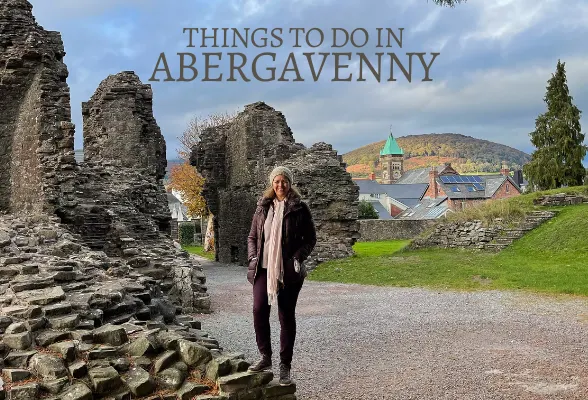In South Wales we discovered the fascinating industrial heritage of Tredegar, a small town with some big stories to tell! Born from iron and coal that were mined here in “The Valleys”, the town has some famous residents who fought for improved working conditions within the industry. We followed in the footsteps of Aneurin Bevan, who grew up in Tredegar and on becoming Minister of Health in 1945 led the formation of the National Health Service, with free healthcare for all. Read on for the stories we uncovered in Tredegar and the characters we encountered, from Chartists to Iron Masters to Nye Bevan, known as the ‘father of the NHS”.
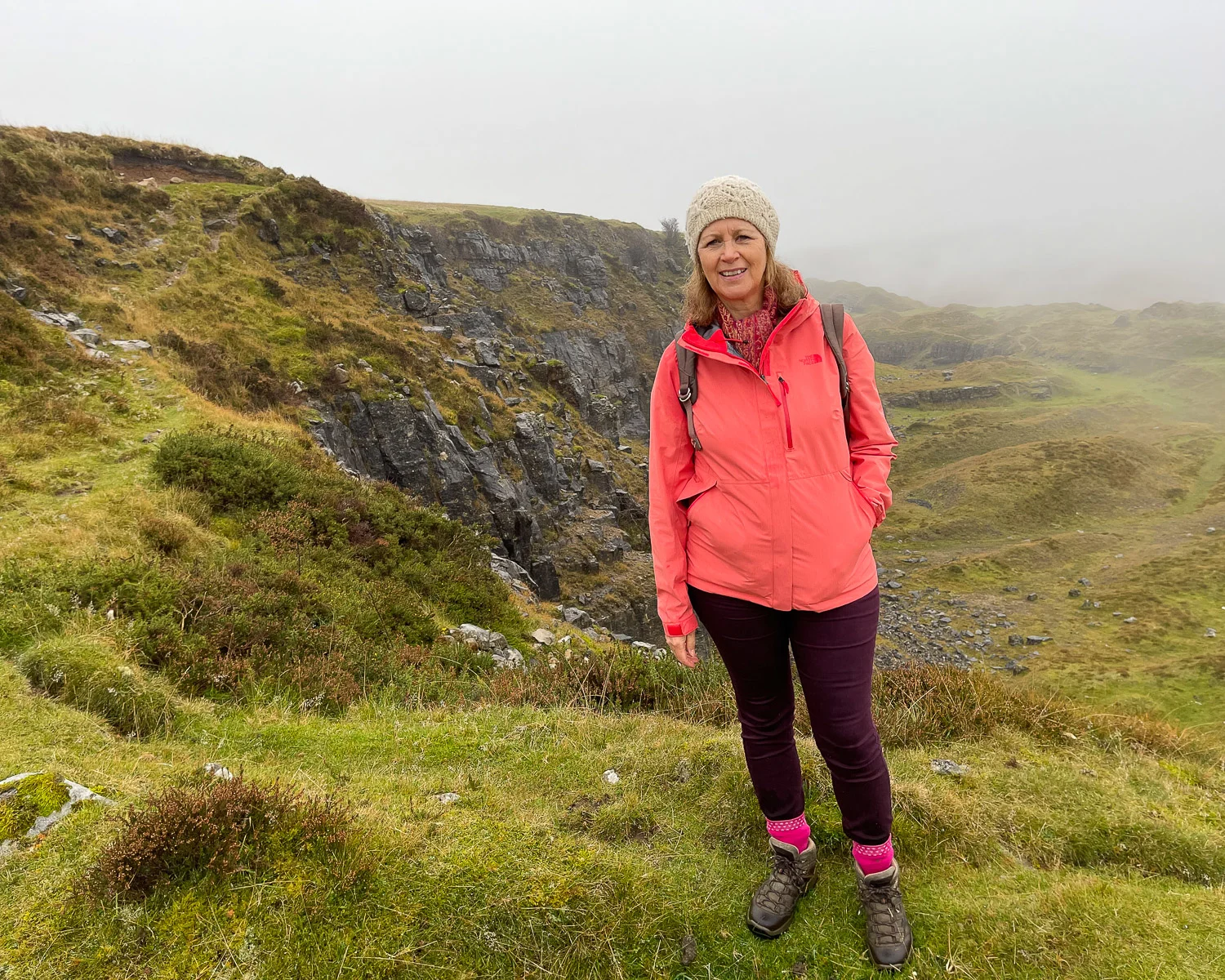
This article may contain affiliate links that provide commission on purchases you make at no extra cost to you. As an Amazon Associate I earn from qualifying purchases.
In the footsteps of Aneurin Bevan and the NHS
The recent history of Tredegar has been coloured by social reformer and politician Nye Bevan who was born in the town and grew up in a family of 10 children. At the age of 14 he left school and started work at Tŷ Trist Colliery, but in his spare time he loved to read and gradually educated himself through the library of the Tredegar Workman’s Hall.
As a young lad, Nye Bevan suffered from a speech impediment, which he overcame through practicing speeches on long walks across the moors at nearby Trefil.
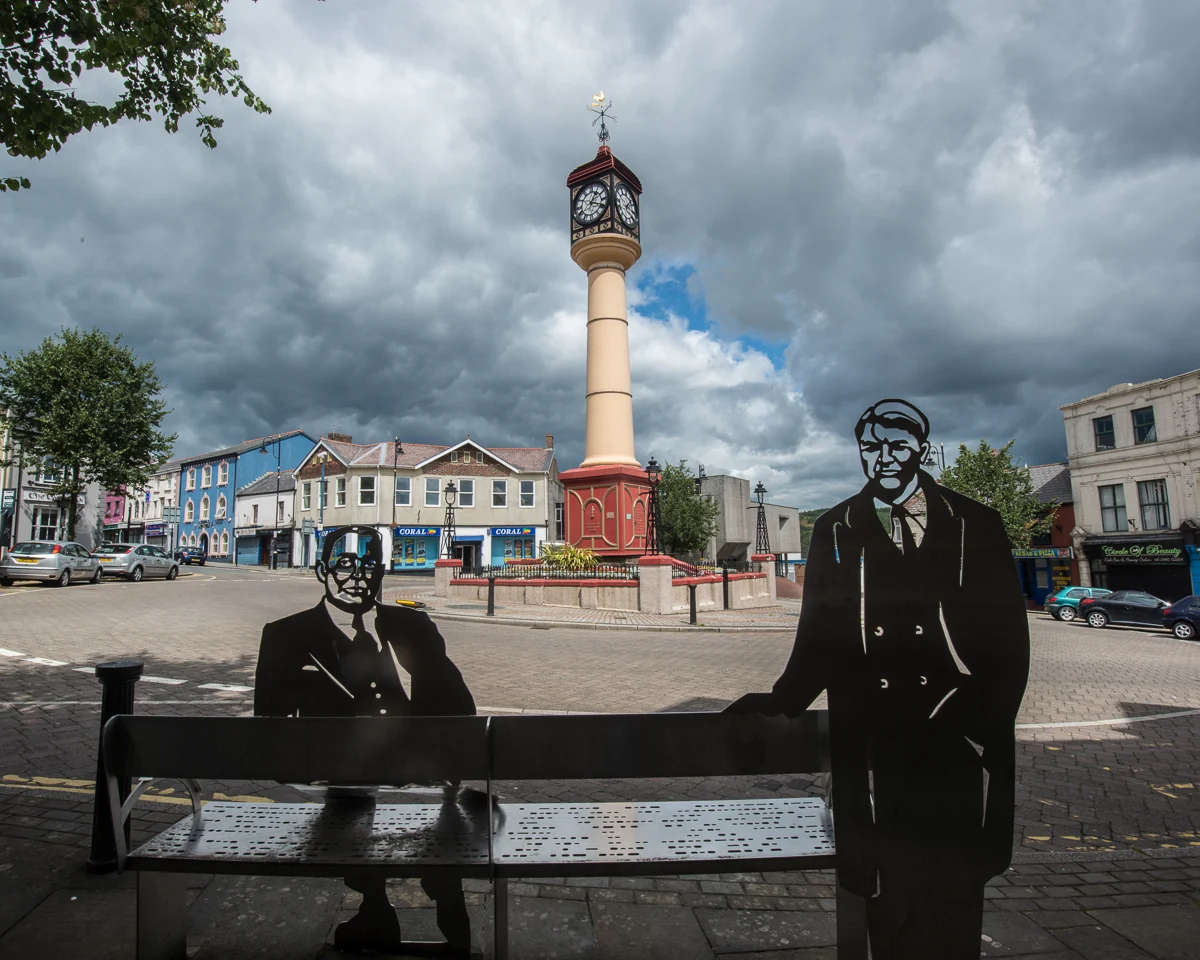
Employment in the town was dominated by the Tredegar Iron and Coal Company and Aneurin saw that improvements for the working man would only be achieved by gaining political power to drive through change.
He was part of a socialist discussion group called the Query Club, putting himself forward for political office, starting as a union representative, then becoming elected to the District and County councils, finally winning the Ebbw Vale Parliamentary seat for Labour.
Following the Second World War, Nye Bevan was appointed as Minister for Health in the new Labour Government and between 1945 and 1950 he led the formation of the National Health Service, based on a model of healthcare that he had seen working well in Tredegar.
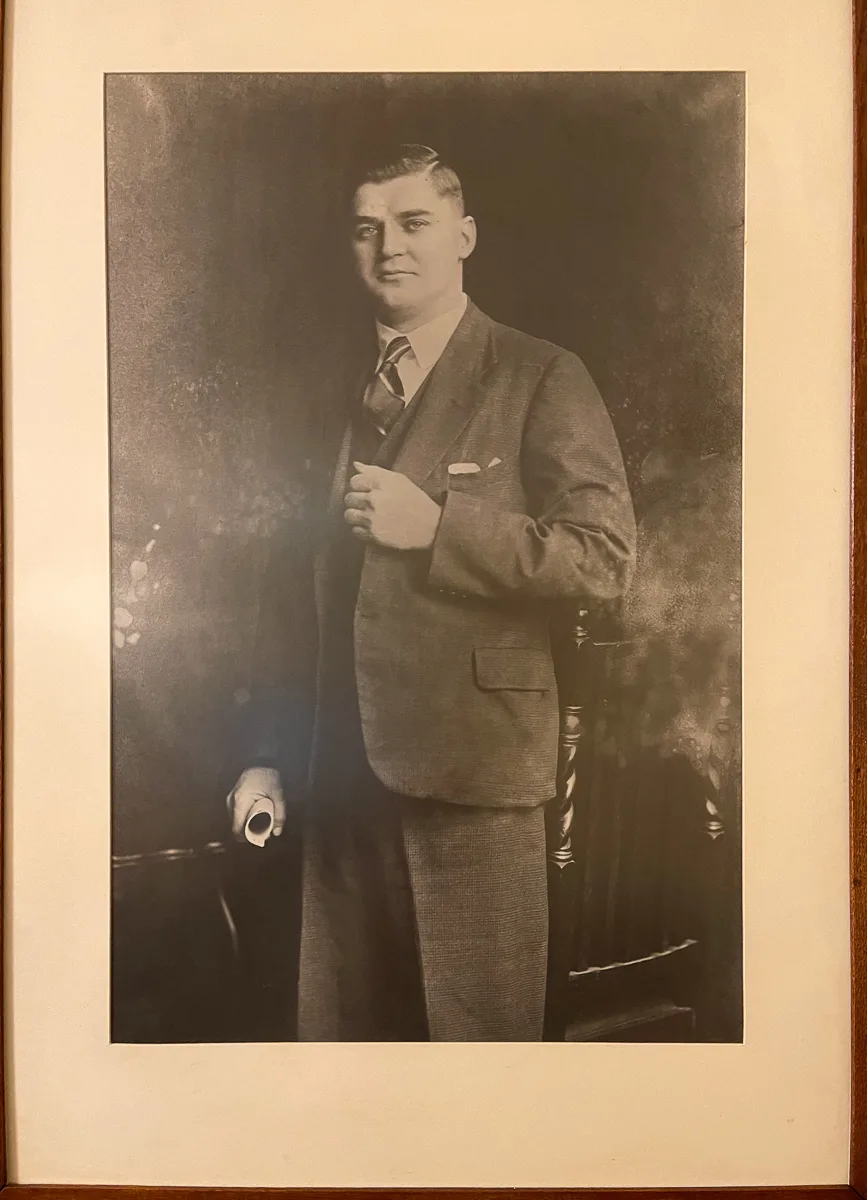
Known as a great orator who was prepared to challenge wealth and privilege, Bevan described himself as “a projectile discharged from the Welsh Valleys” who always fought for the working man. Voted as first in the list of 100 heroes of Wales, he is quoted as saying;
“When I listen to the cacophony of harsh voices trying to intimidate, I close my eyes and listen to the silent voices of the poor”
Bedwellty House in Tredegar
To uncover some of the stories of Tredegar, we started at Bedwellty House, a Grade II listed mansion, surrounded by a 26 acre Victorian garden. Built in 1822, this was the home of Samuel Homfray, an Ironmaster who was one of the co-owners of the Tredegar Ironworks.
Following a £5M renovation in 2011, the mansion is now run by the Tredegar Town Council and used as an education centre, council offices, wedding venue and cafe, and is free to visit.
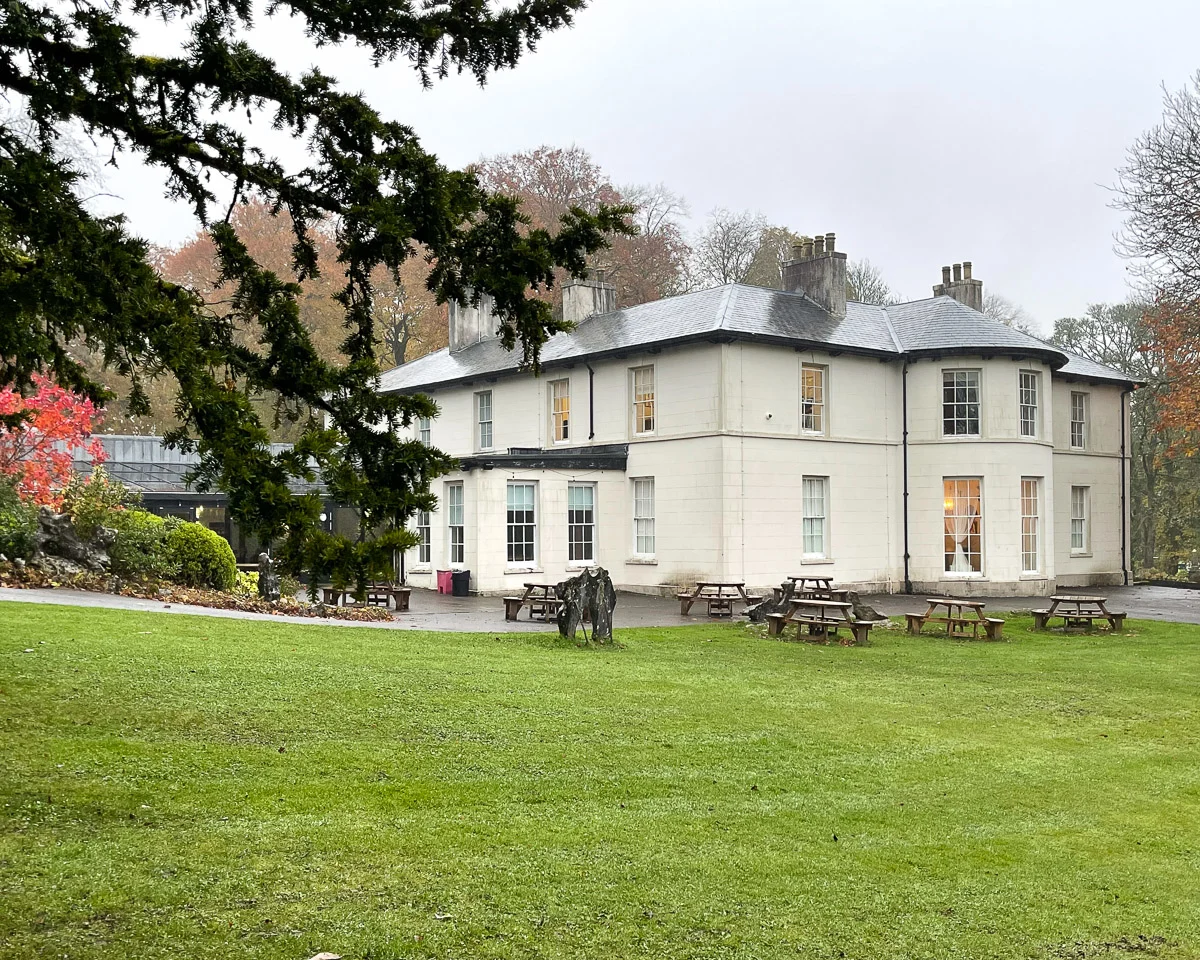
Bedwellty House has connections with Aneurin Bevan who was elected in 1922 to the Tredegar Urban District Council and attended meetings in the council chamber within the house.
We were able to visit the council chamber and watch a short video about Bevan’s life, sitting in the exact wooden benches where he spoke up forcefully for better working and living conditions among the local miners and iron workers.
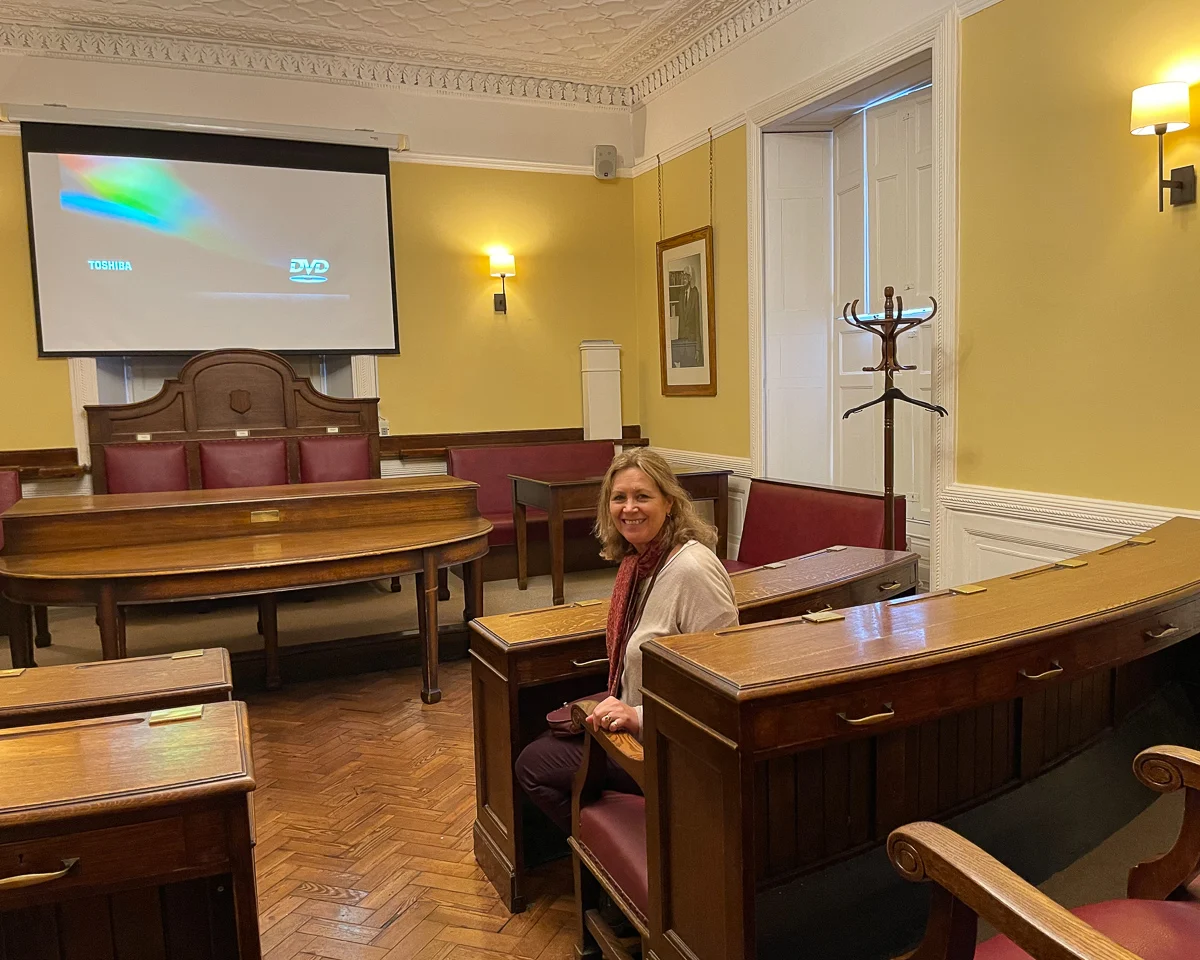
Wandering through the surrounding gardens of Bedwellty Park, we enjoyed the ornamental grotto, icehouse and rose garden close to the house, as well as a water cascade and walks among the specimen trees that were laid out in the 20th century.
Look out for the enormous block of coal, that was originally intended to be sent to the Great Exhibition of 1851 in London, but at 11.5 tons it proved too heavy to transport and was put on display in Bedwellty Park instead.
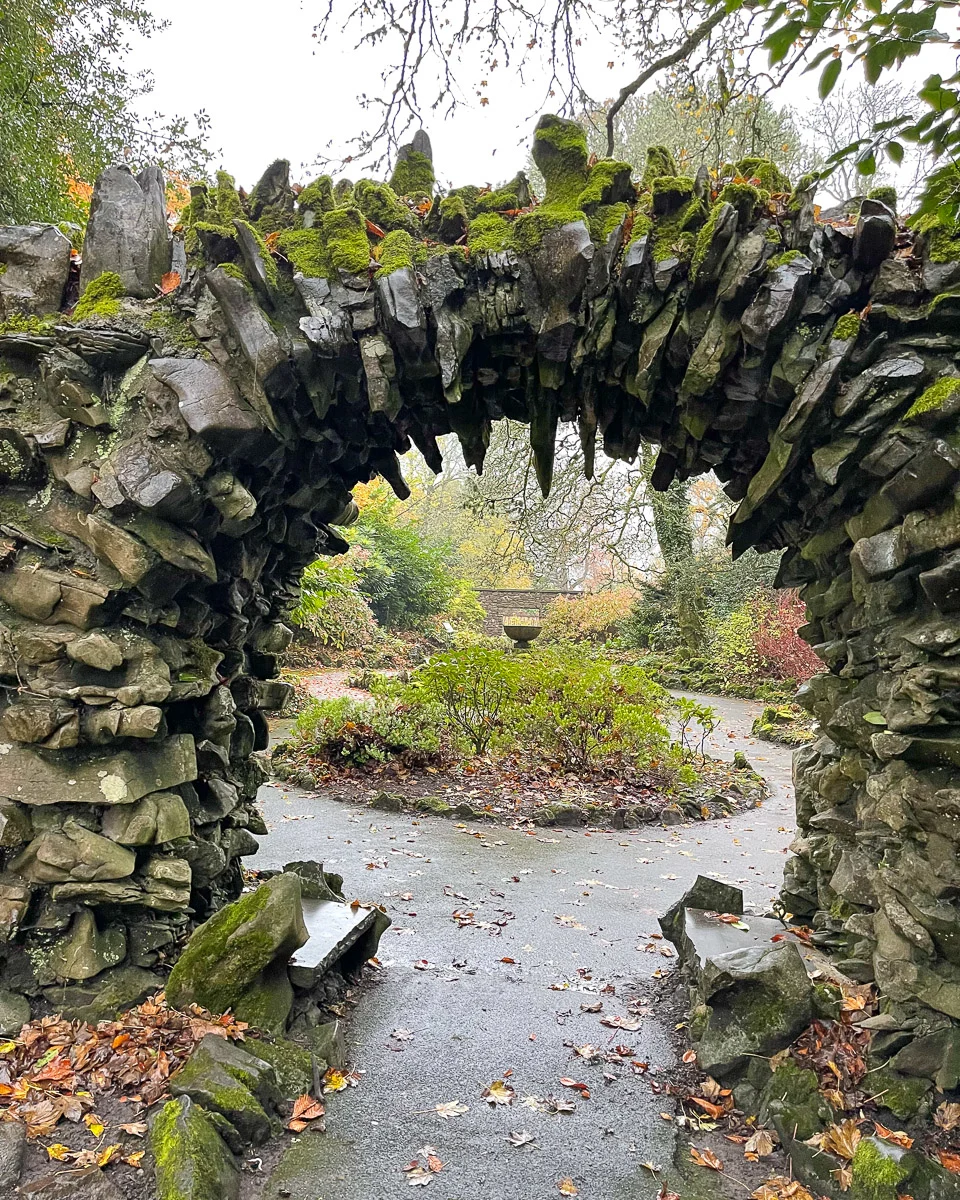
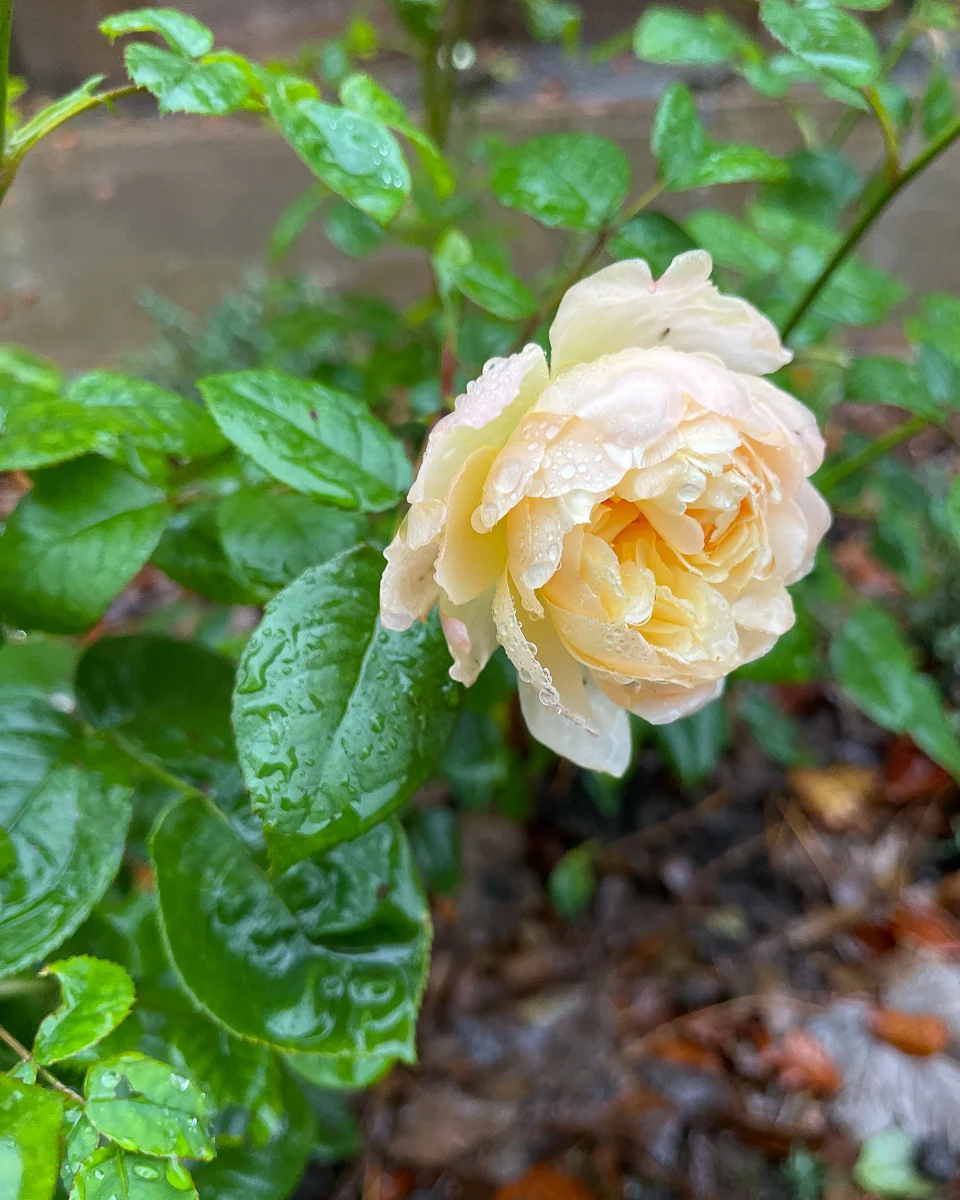
The Orchid Tea Room is a favourite place for lunch locally, a glazed extension built on the site of the original Orchid House, which was heated with a furnace and used to display tender plants. The cafe serves drinks, cakes and light lunchtime dishes.
We enjoyed our Buck Rarebit, where the traditional Welsh Rarebit is topped with a poached egg. In fine weather (which unfortunately it wasn’t on the day we visited!) you can sit on the terrace outside the cafe with a view over the lawns and gardens.
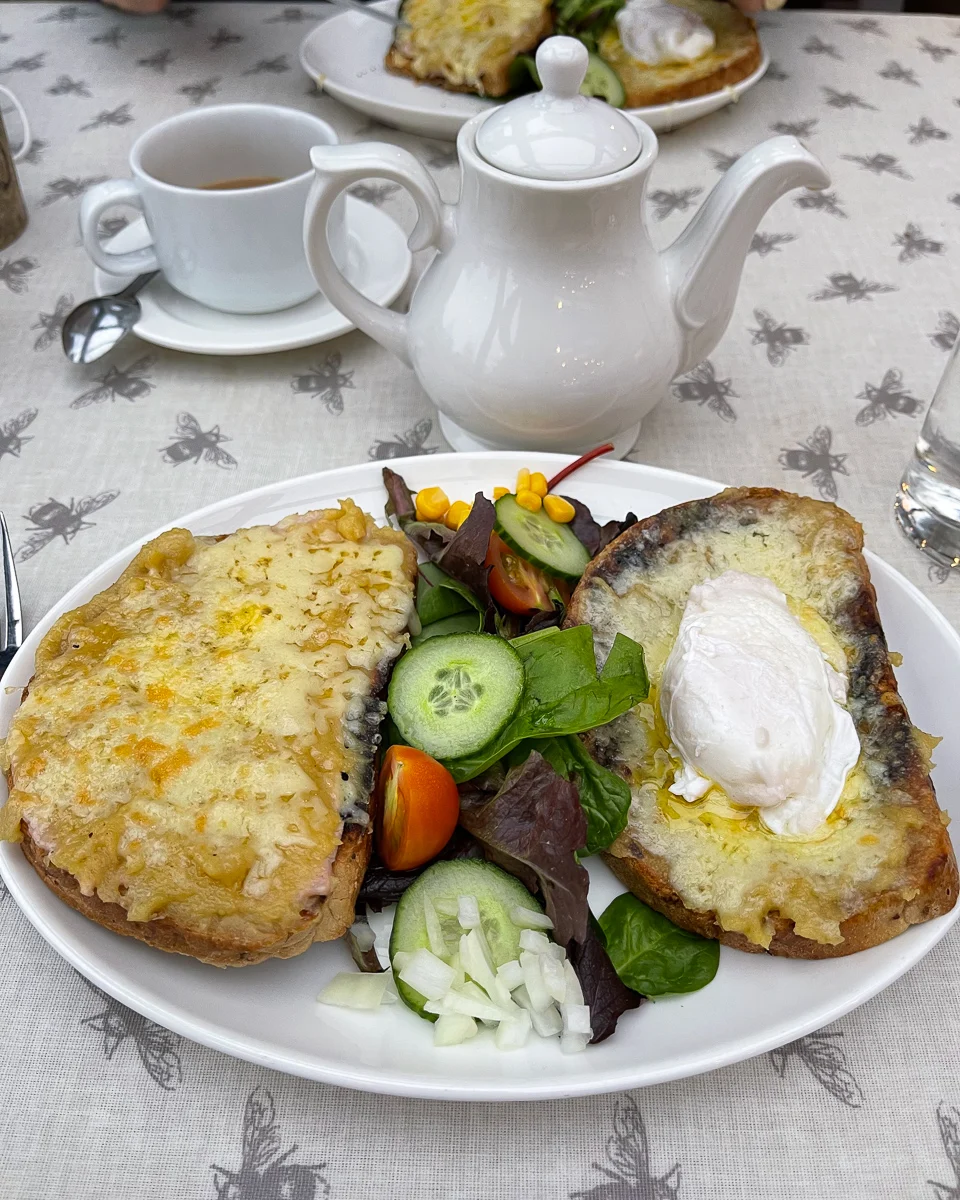
Check out my guide to Big Pit and the Blaenavon Industrial Landscape in South Wales
The Aneurin Bevan Trail around Tredegar
Bedwellty House is the starting point for the Aneurin Bevan Trail, taking in the places around town associated with Nye Bevan. You’ll see iron plaques in various places showing a map of Tredegar and the surrounding area, with points of interest associated with the town’s history.
It’s worth picking up a leaflet of the trail at the town’s heritage centre (No 10 The Circle) or downloading it here to have the full information on places to look out for in Tredegar.
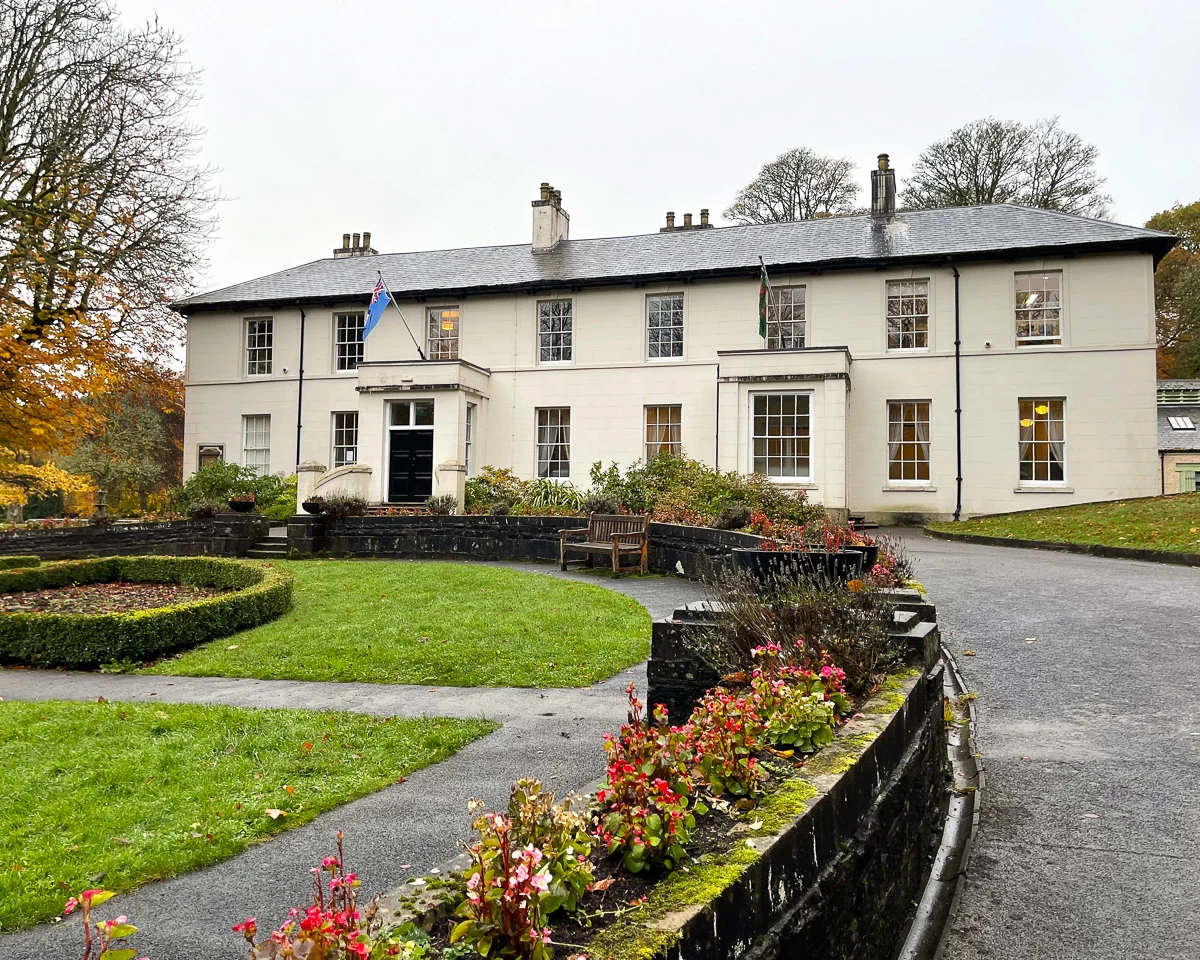
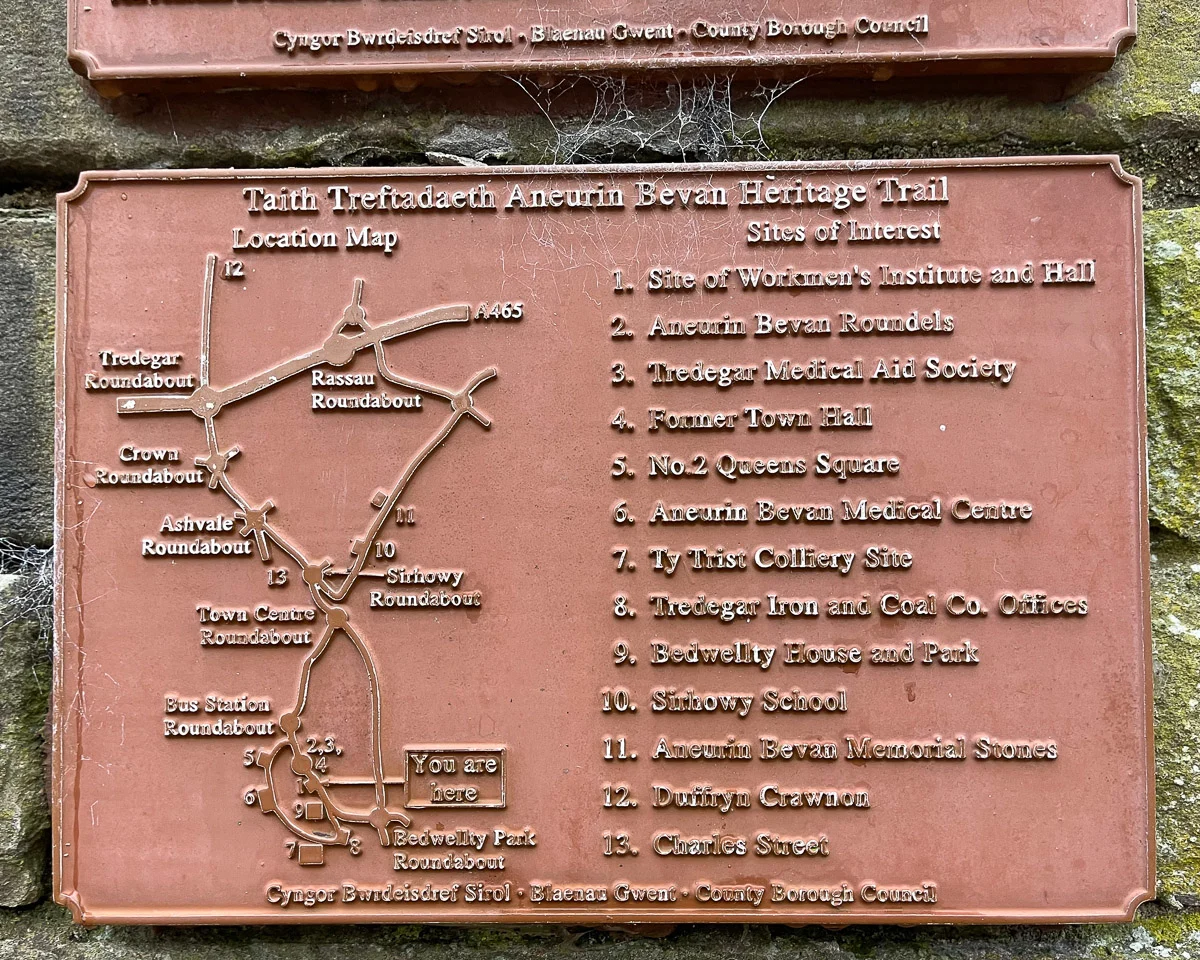
Passing by the site of the Workman’s Hall and library, where Nye Bevan would borrow the books to educate himself, we walked up the hill to the imposing town clock, which is one of the landmarks at the centre of the town.
The 72 feet high cast iron clock was the idea of Mrs Davis, wife of the ironworks manager and was placed in the town square in 1859, becoming a meeting point and centre for celebrations in the town.
The former Market Square is now known as “The Circle” and a number of notable buildings stand at this point, including the offices of the Tredegar Medical Aid Society on the corner at No 10 The Circle.
Other places of interest on the town trail include the site of the Ty Trist Colliery (now the local comprehensive school) where Nye Bevan began work age 14, and his mother’s home in Queen Street which he would visit after becoming an MP, briefly using it as a base for his constituency work.
Also on The Circle is the Tredegar Local History Museum which is located in the library, run by volunteers and housing artefacts and information from Tredegar’s history.
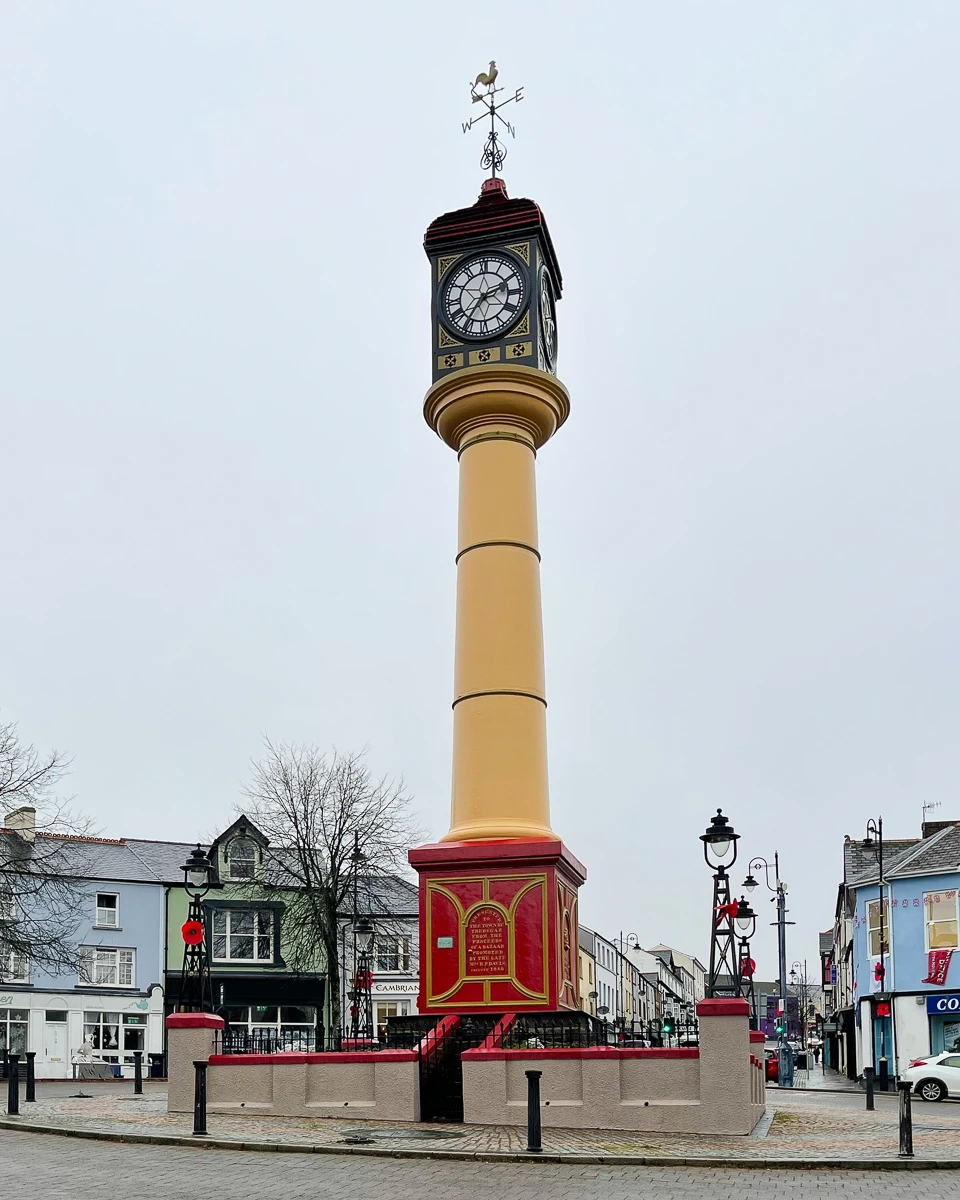
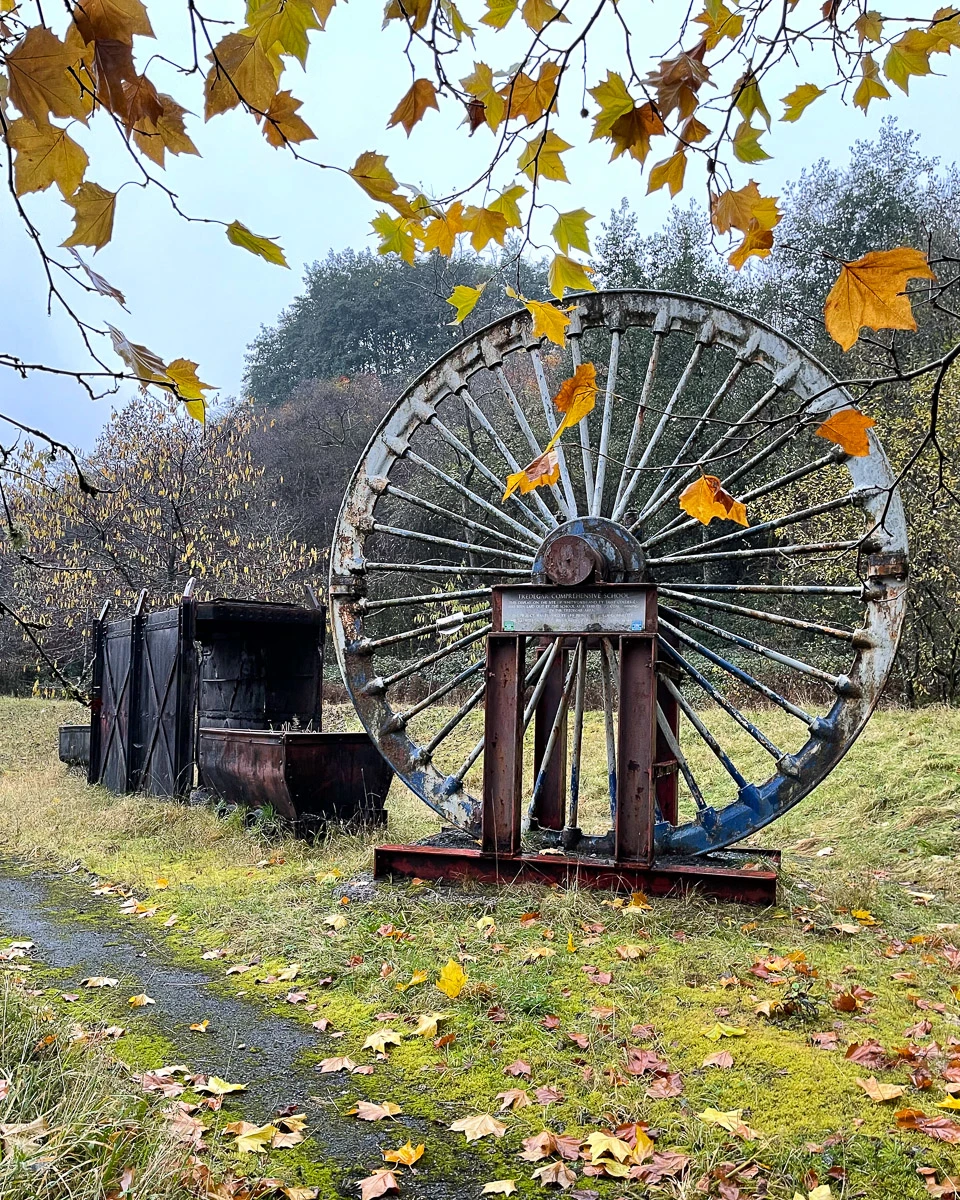
Number 10, The Circle in Tredegar
At Number 10 The Circle, the former offices of the Tredegar Medical Aid Society have been renovated to make a small heritage centre, which is well worth a visit. Around the two ground floor rooms are displays that explain how the medical society provided subscription based medical care for local working people, with interactive audio and video exhibits.
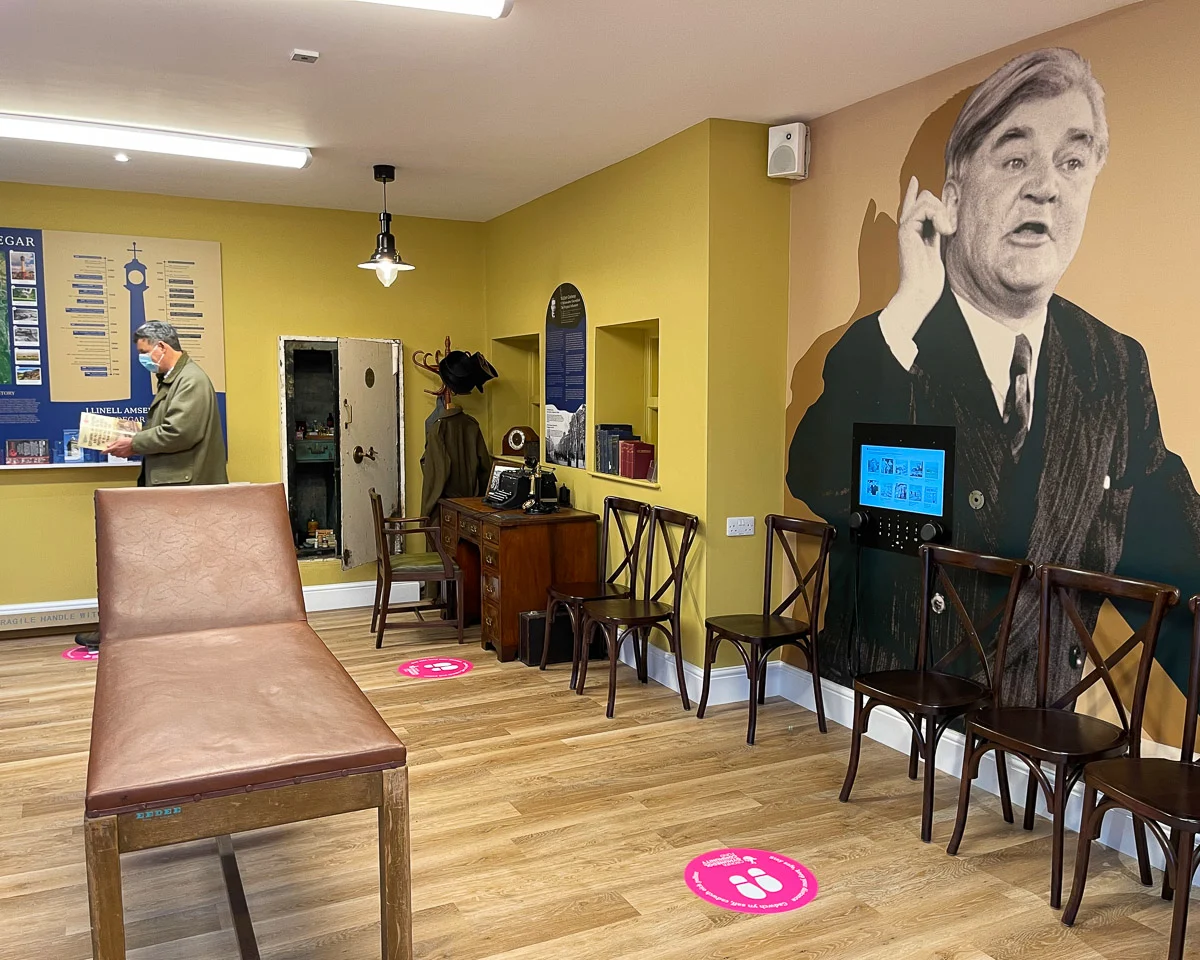
Before 1813, local people often had to travel to Abergavenny to be treated, but the Medical Aid Society was funded from a small deduction in the wages from the Tredegar Ironworks, ensuring that medical care was free and locally available in the town.
The Medical Aid Society was a great success and Nye Bevan who had been one of the society’s committee members, used it as a model for the NHS when he became Minister for Health in 1945. On the introduction of the National Health Service in 1948, Bevan was quoted in saying,
“All I am doing is extending to the entire population of Britain the benefits that we had in Tredegar for a generation or more – we are going to Tredegar-ise you”
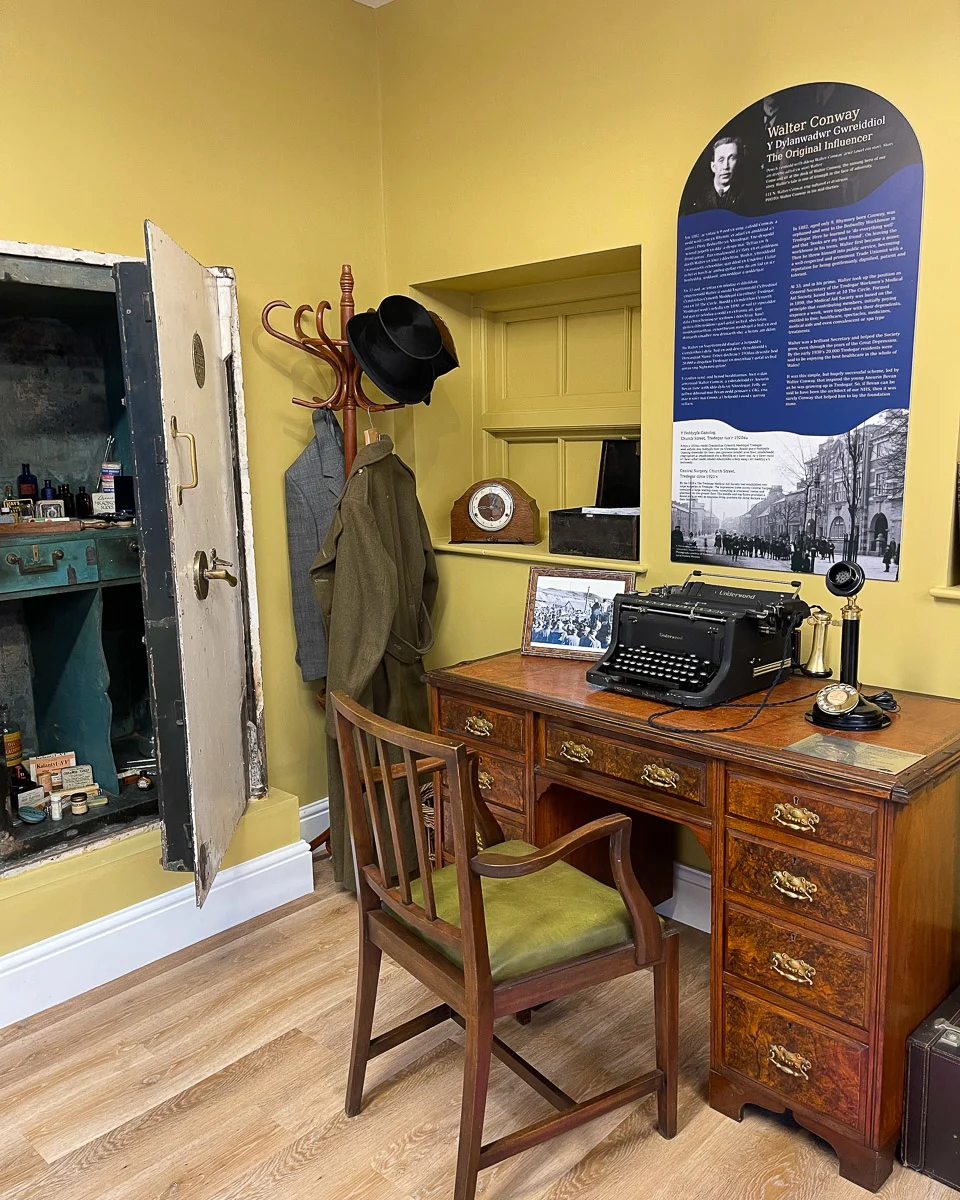

Need a guidebook for Wales? We recommend the Lonely Planet Wales Travel Guide
The Tredegar Trails
No 10 The Circle also provides a base for Made in Tredegar, a film project to create videos and audio material from Tredegar. Six different themed Tredegar Trails have been developed, to help you explore the area, including Bedwellty Park, Around the Town and Bevan’s Tredegar.
It’s easy to access the different trails, by picking up a booklet in Bedwellty House, No 10 The Circle Heritage Centre or Tredegar Museum. If you prefer to use your mobile, look out for coloured QR codes to scan at points around town – each colour is for a different themed trail.
The QR code will take you to the page on the Made in Tredegar website with the relevant audio recording to explain what you are seeing. Or you can access the audio tracks directly from the Made in Tredegar Website.
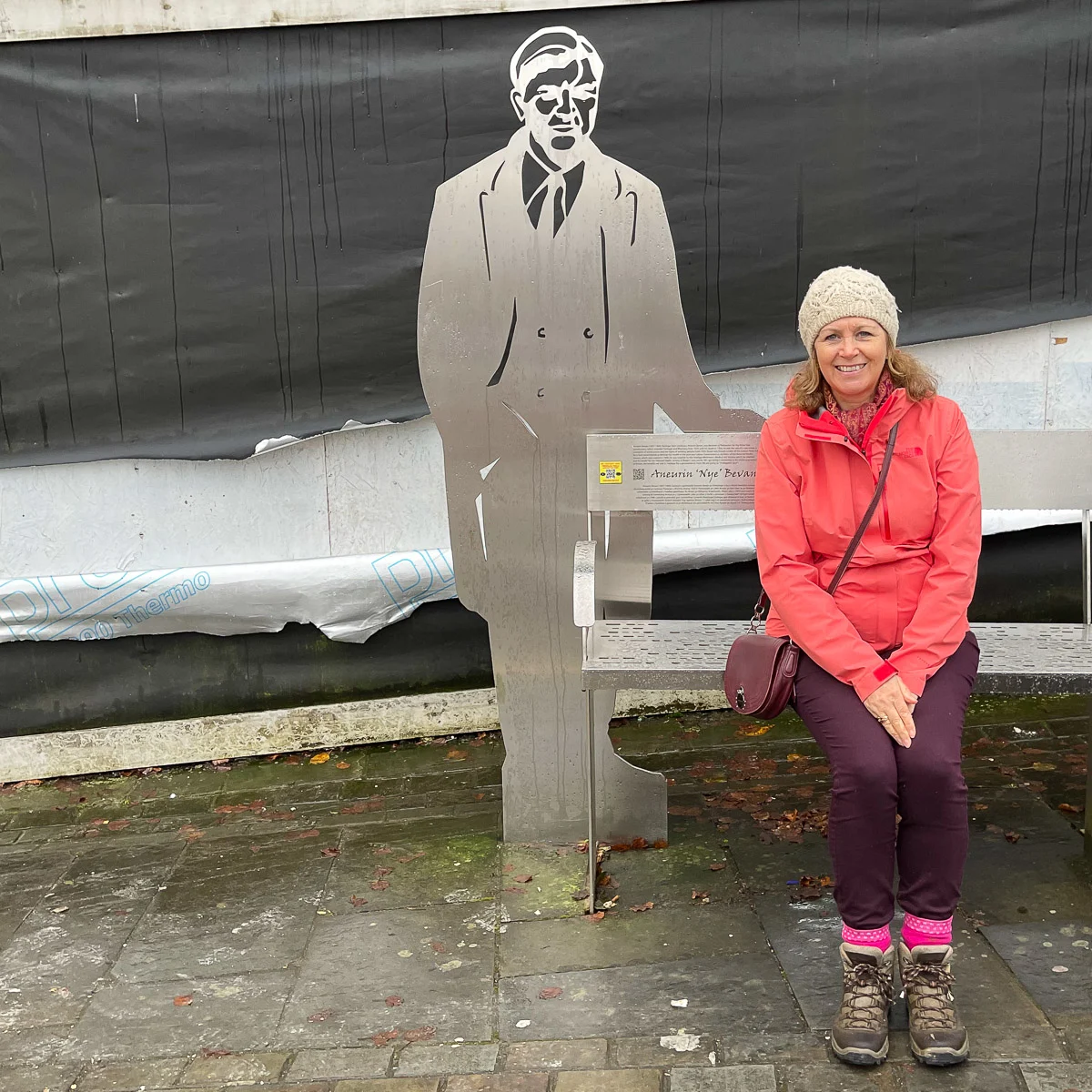
Tredegar Silver statues
One of the Tredegar Trails that we especially enjoyed was the Silver Statues, with metal silhouettes of notable figures from the town’s development as an iron town, from Chartists to Iron Masters.
Facing the town clock, we sat on the bench beside the figures of Nye Bevan and Walter Conway who was born in 1873 and as an orphan, grew up at Bedwellty Workhouse.
Walter went on to become secretary of the Tredegar Medical Aid Society in 1915 and it was under his leadership that the society thrived. The society grew to run two medical surgeries with dentists, doctors and nurses, providing a free service to 20,000 local people.
In Bedwellty Park we also found the statue of Samuel Homfrey senior, who was the local Iron Master. Having married the daughter of Sir Charles Morgan, he was a co-founder of the Tredegar Ironworks on land leased from his father in law.
On part of the land he built Bedwellty House as a genteel residence for his family, well away from the dirt and noise of the ironworks. It was his son who inherited the ironworks, estate and house, remodelling it into the Georgian mansion we see today.
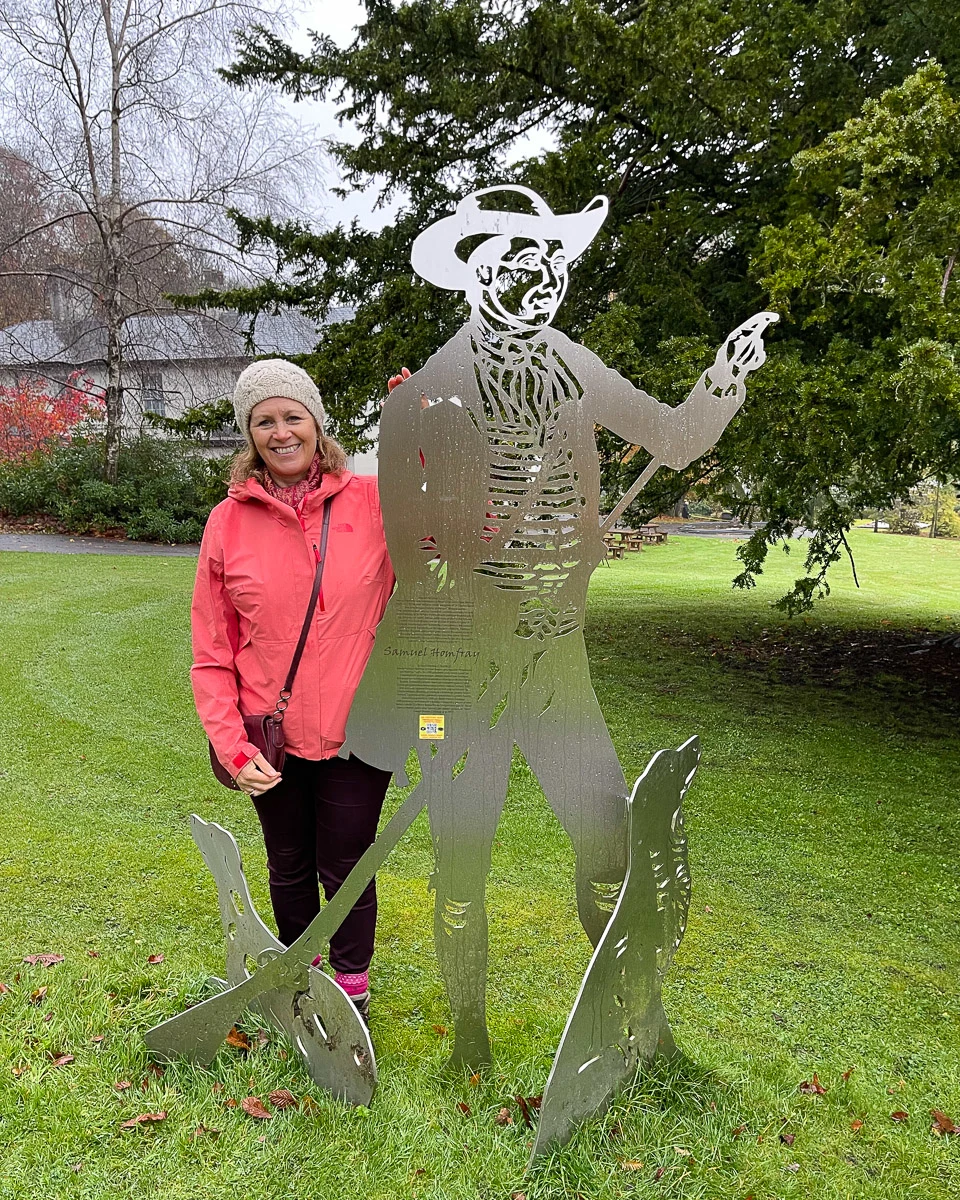
At the opposite end of the social spectrum are the silver statues of Anne Prosser age 16 and Mary Jones age 15, who worked in the mines in the 1800s. Child Labour was a typical practice in the mines and ironworks, with long hours exchanged for pay that was a quarter of an adult miner’s wage.
An investigation into the practice was published in 1841, citing the girls as examples and highlighting harsh working conditions for children. The following year an act of parliament made it illegal to employ children under the age of 10 in the mines.
Discover the scenic walks in the South Wales Valleys
Aneurin Bevan Memorial Stones
A short drive outside Tredegar it’s worth stopping at the Aneurin Bevan Memorial Stones, four stone monoliths that were erected on the hillside where Nye Bevan would give open air speeches to his constituents. Bevan was known as a great orator, drawing large crowds who came to hear him speak.
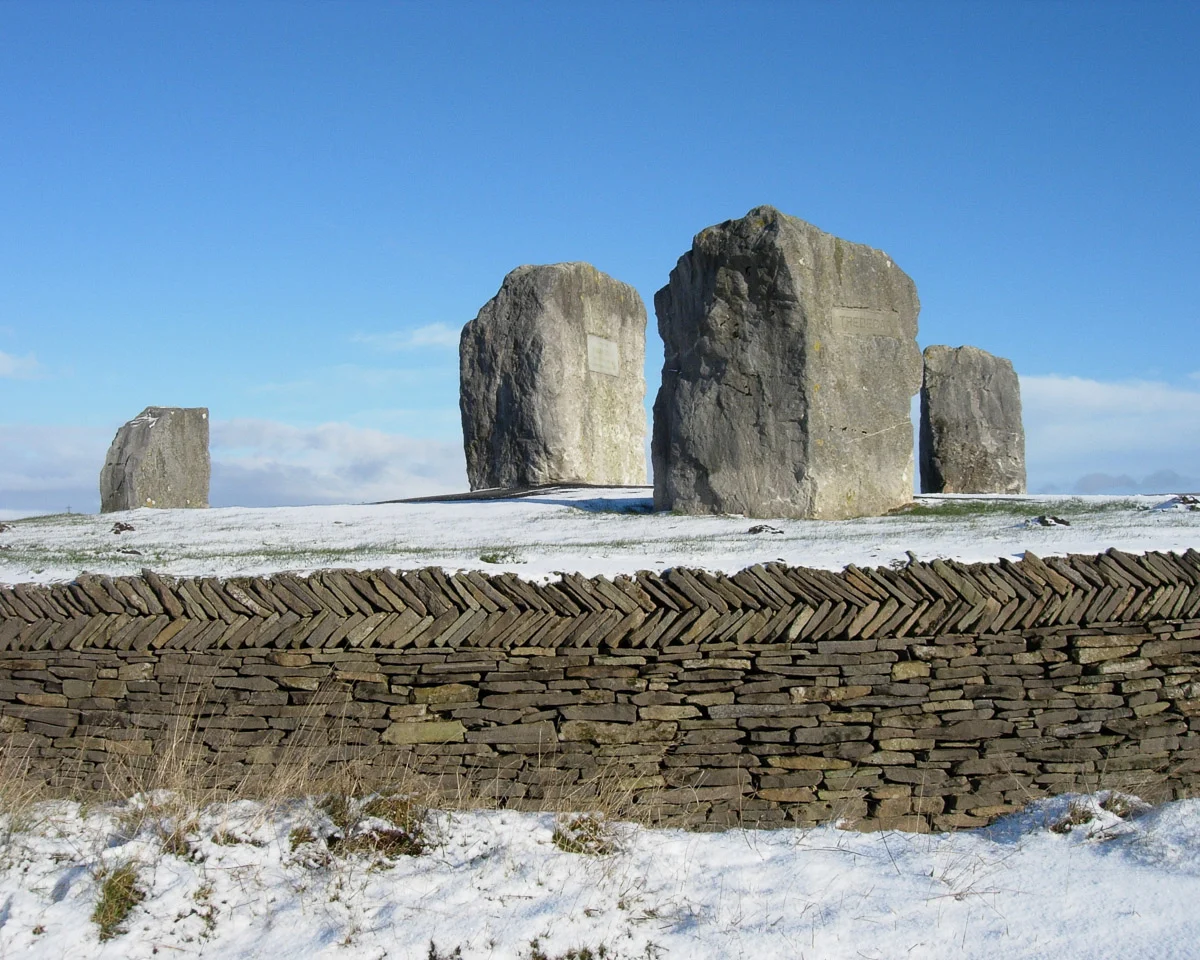
This location was easy to reach from the three areas that Bevan represented as an MP between 1929 and 1960, of Ebbwr Vale, Tredegar and Rhymney. The central stone of the monument represents Bevan himself and the three others represent the towns of his constituency, each pointing in their direction.
Numerous walking and cycling trails run through this area including the Sirhowy Valley Walk that starts at the memorial stones and continues to Newport, where it ends at Tredegar House (National Trust), home of Sir Charles Morgan who leased the land for the Tredegar Iron Works.
Where to eat while visiting Tredegar
On our visit to Tredegar, we enjoyed an excellent lunch in the Orchid House tea room at Bedwellty House, which is open daily for drinks, cakes, sandwiches and home cooked lunchtime dishes.
For dinner we stopped at the Tredegar Arms Hotel and Restaurant, which served the town as a coaching house before it was converted into a pub in the 1970s and was given a complete renovation in 2017.
The Tredegar Arms serves excellent pub fare, and Guy enjoyed his steak, while I ordered a tasty chicken burger with fries, coleslaw and onion rings, followed by an apple crumble which we shared.
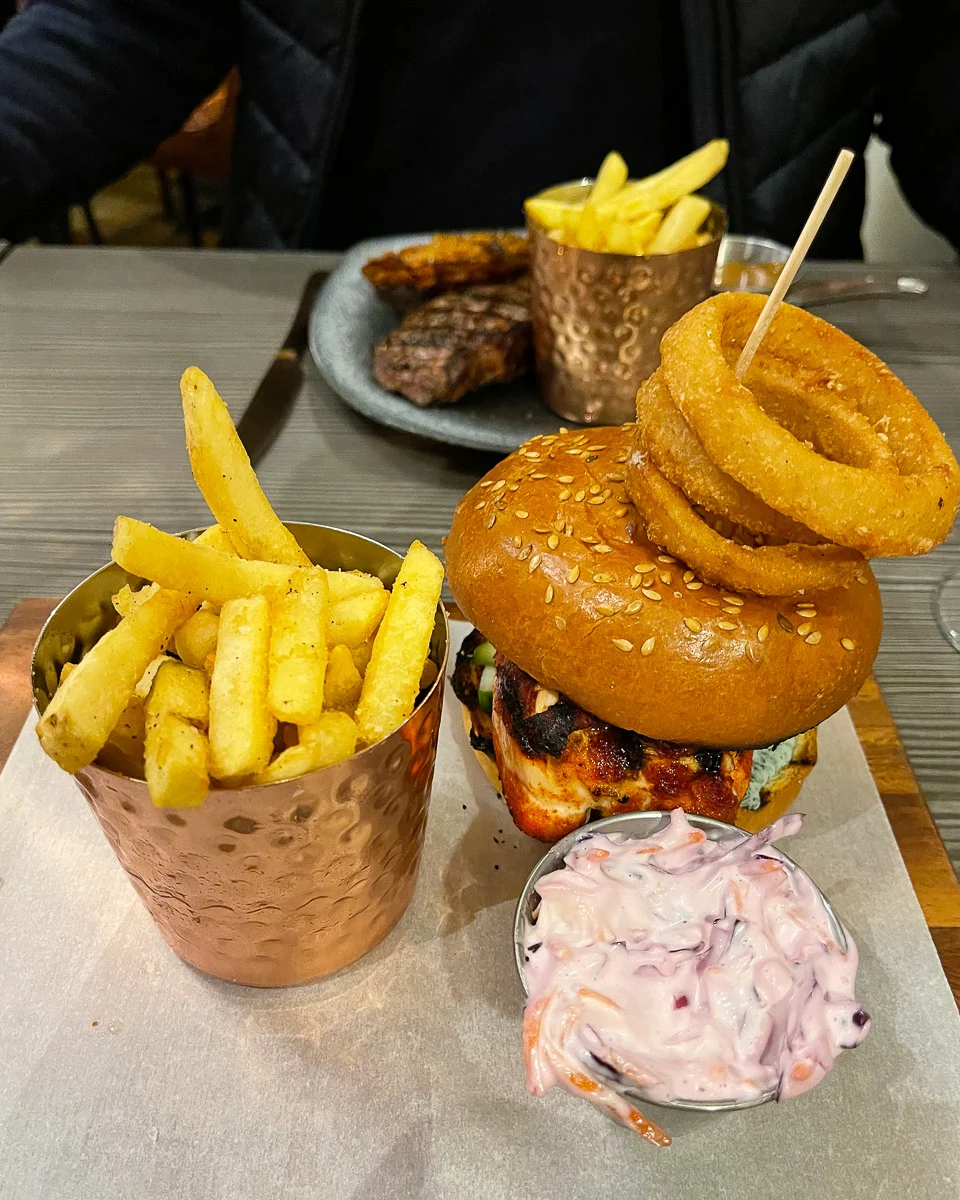
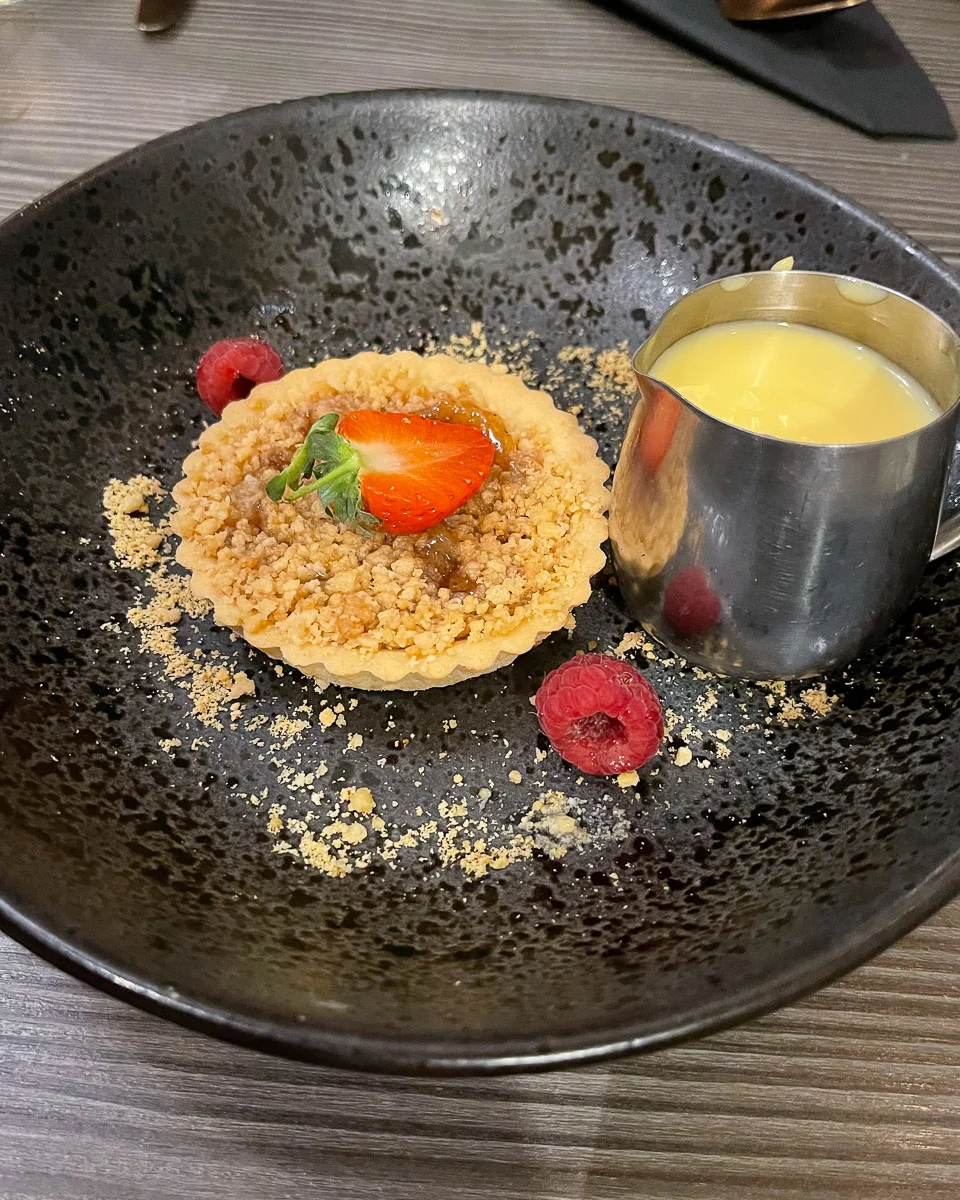
Read about the Wye Valley – what to see, where to eat and stay
Walking to the Chartist Cave at Trefil
Close to Tredegar is the village of Trefil, a starting point for some rugged moorland walks and an area where Nye Bevan loved to walk and practice his speeches. With our guide, Alyson Tippings we took a walk to a local landmark, the Chartists Cave.
Bevan undoubtedly took inspiration from the Chartist movement, which was one of the earliest to press for improved conditions and democratic rights for working men of the mines and ironworks.
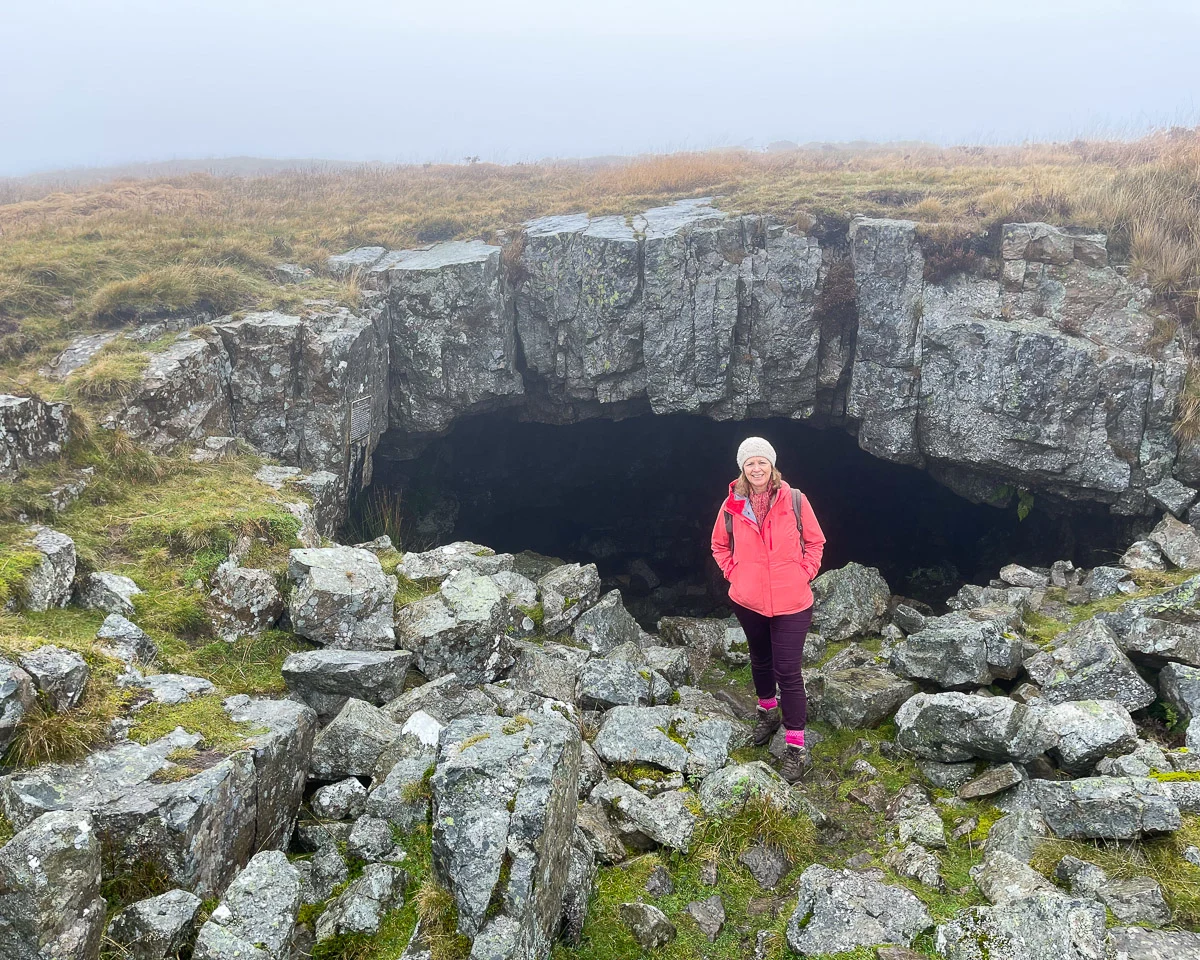
The Chartists took their name from the 6 point charter of rights that they demanded, pushing for working men to have the right to vote and choose their own representation in parliament. This movement grew from the 1830s and in 1839 the Newport rising saw 4000 armed working men from the valleys of South Wales marching on the town.
At Newport, they were met by soldiers who fired into the crowd to put down the rising and the leaders of the uprising were subsequently found guilty of treason, although their death sentence was commuted to transportation.
It is thought that the Chartist Cave was a meeting point in the planning of the uprising and a place where weapons made secretly at the ironworks could be hidden.
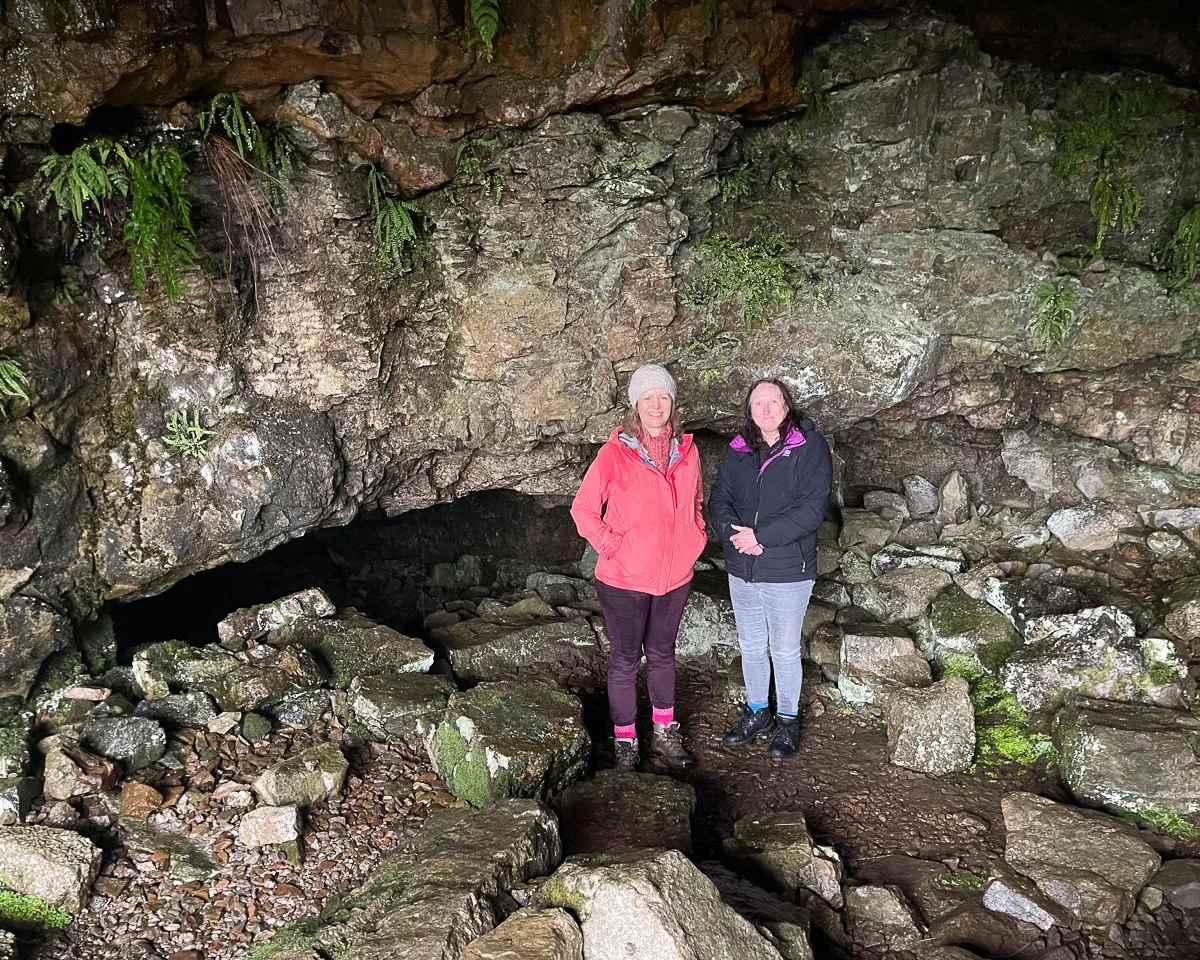
The small cave is open to walk inside, the walls covered with hanging ferns. Two narrow openings within lead to further tunnels that have been explored by local cavers but didn’t look very safe or inviting to us! (Note: don’t try to explore the inner chambers without an experienced caver!)
Still it was a convenient place to shelter from the rain for a cup of tea from the thermos and home made Welsh cake that our guide Alyson kindly provided. After our stop at the Chartists Cave, we made a circular route back to our starting point, passing the wild Welsh mountain ponies who eyed us curiously through the mist and seemed quite unafraid.
Although they live out on the moor all year round, these ponies do have owners among the local farmers who keep an eye on them, although they are never ridden or used for any farm work.
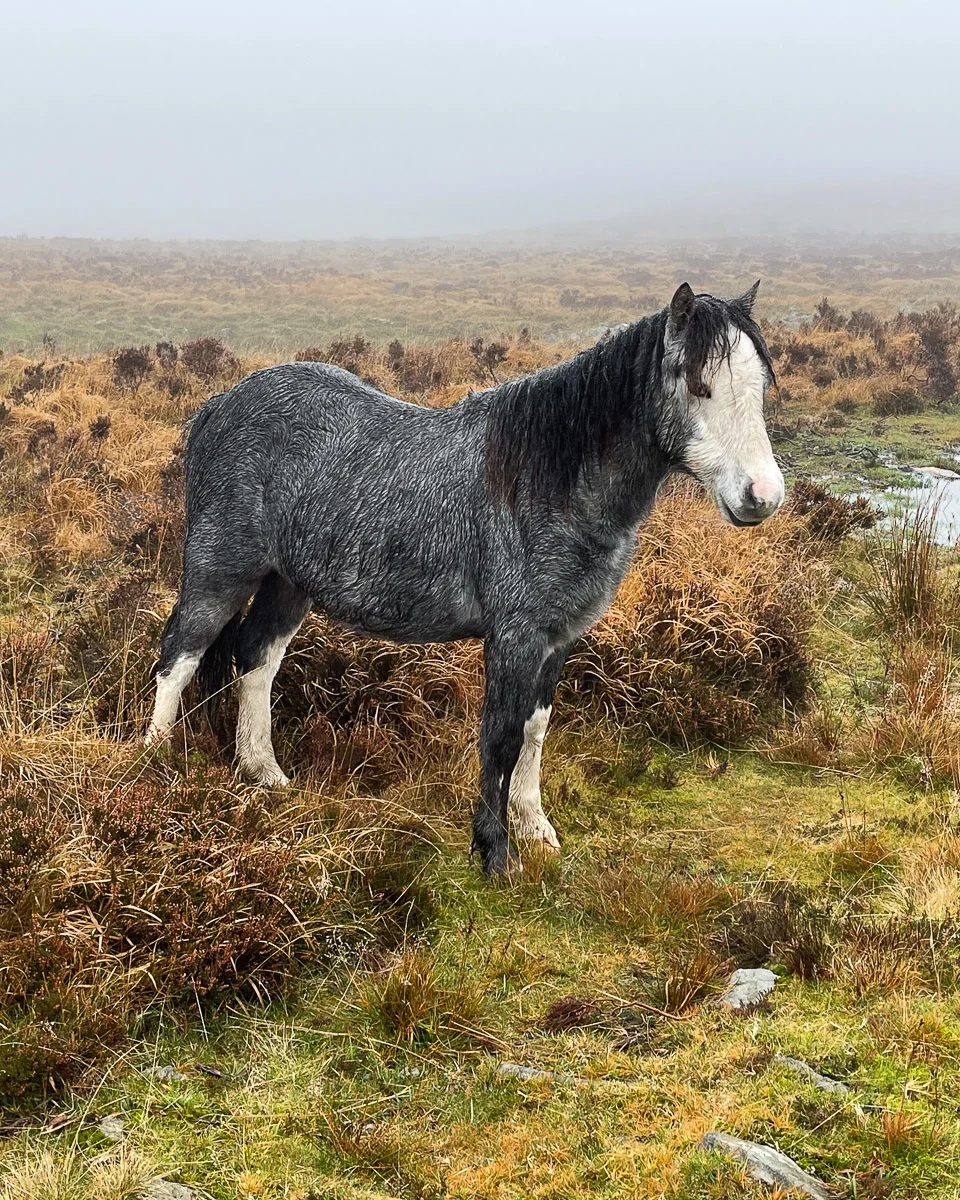
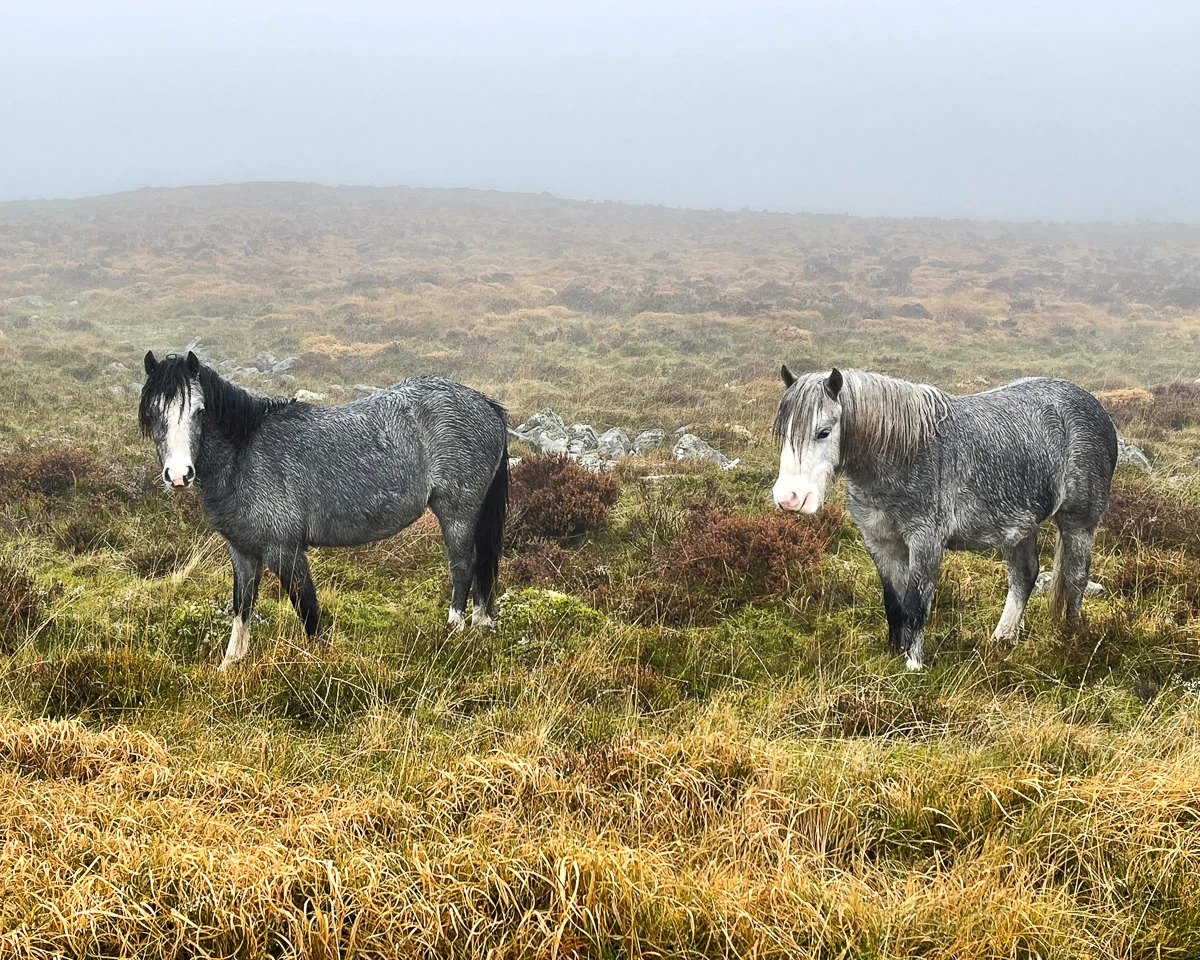
Our walk took us to the high point overlooking the Dyffryn Valley where Nye Bevan’s ashes were scattered and the Brecon Beacons National Park, although the weather was so misty and damp that we could barely see any of the views!
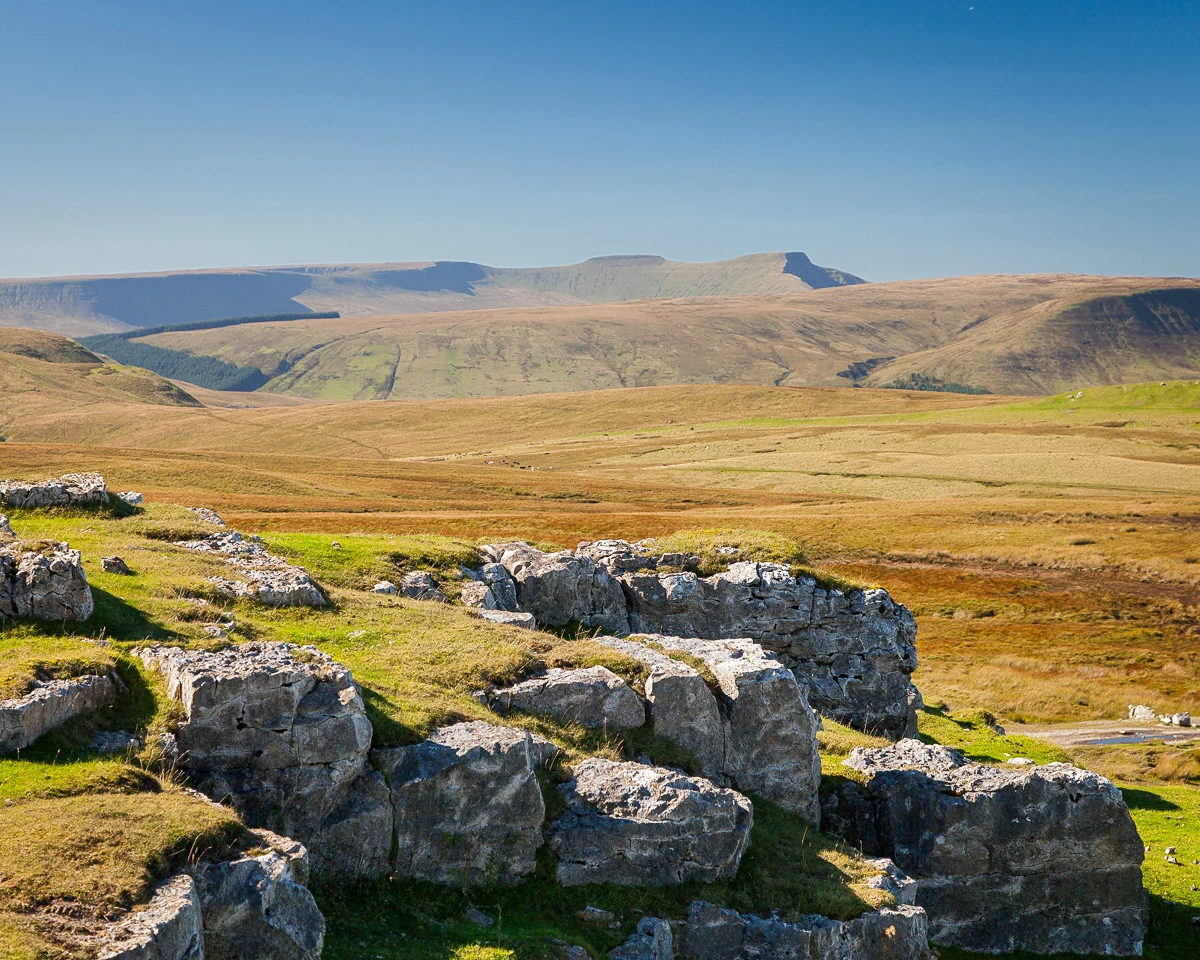
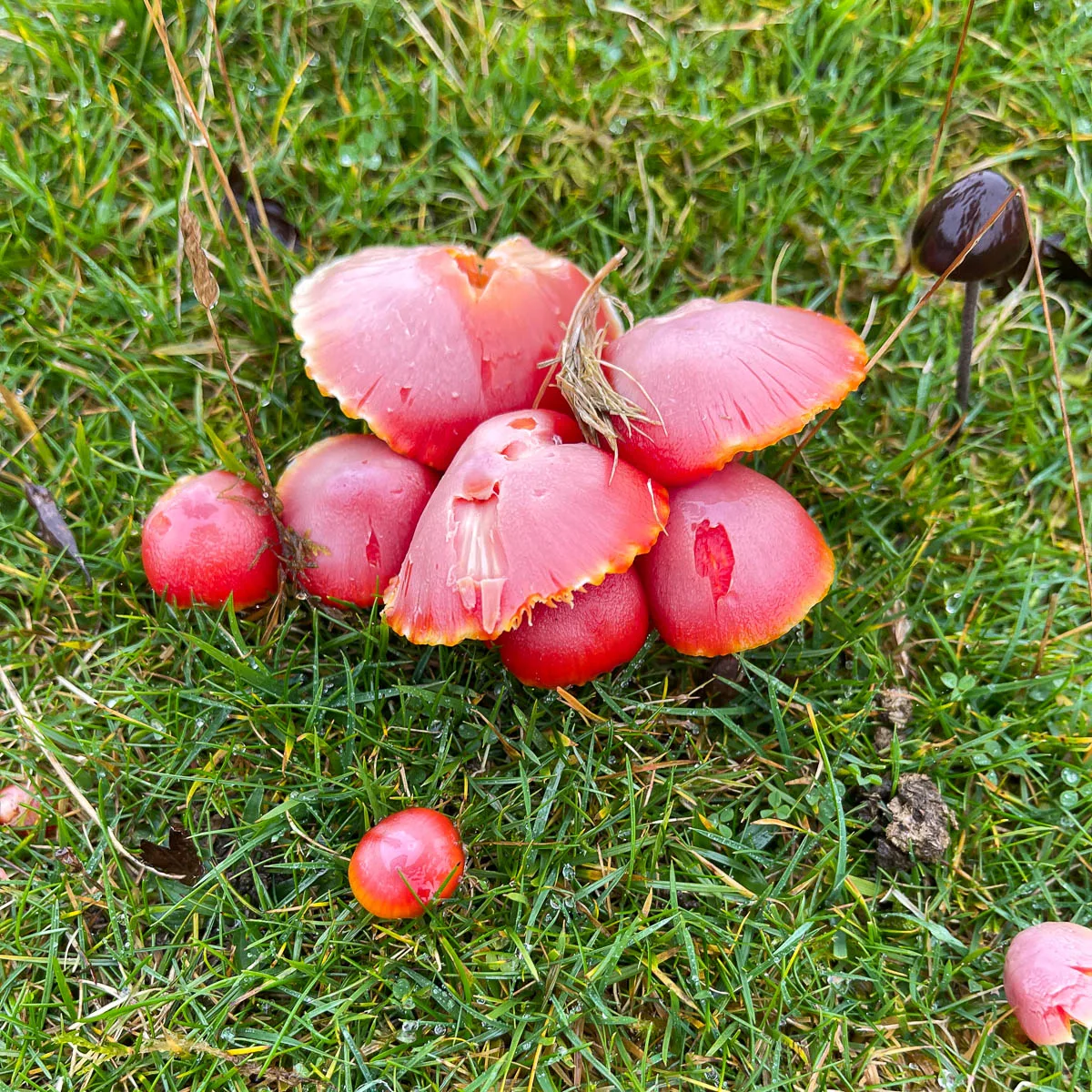
We continued along the flat tramroad through the old Trefil quarry, which was used to supply limestone to the Sirhowy Ironworks. It has long been abandoned and we walked back to our starting point via the access road for the new quarry which is still in use.
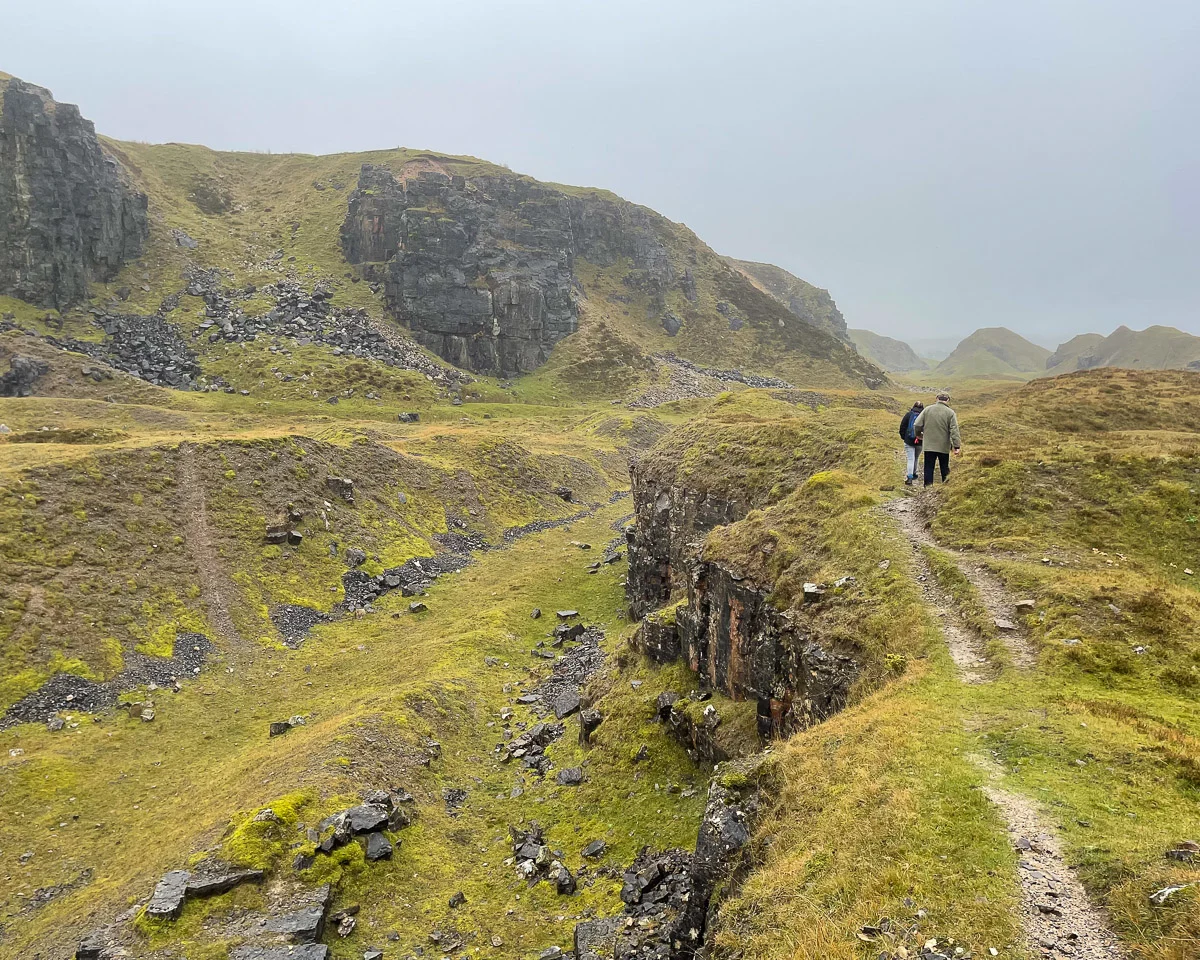
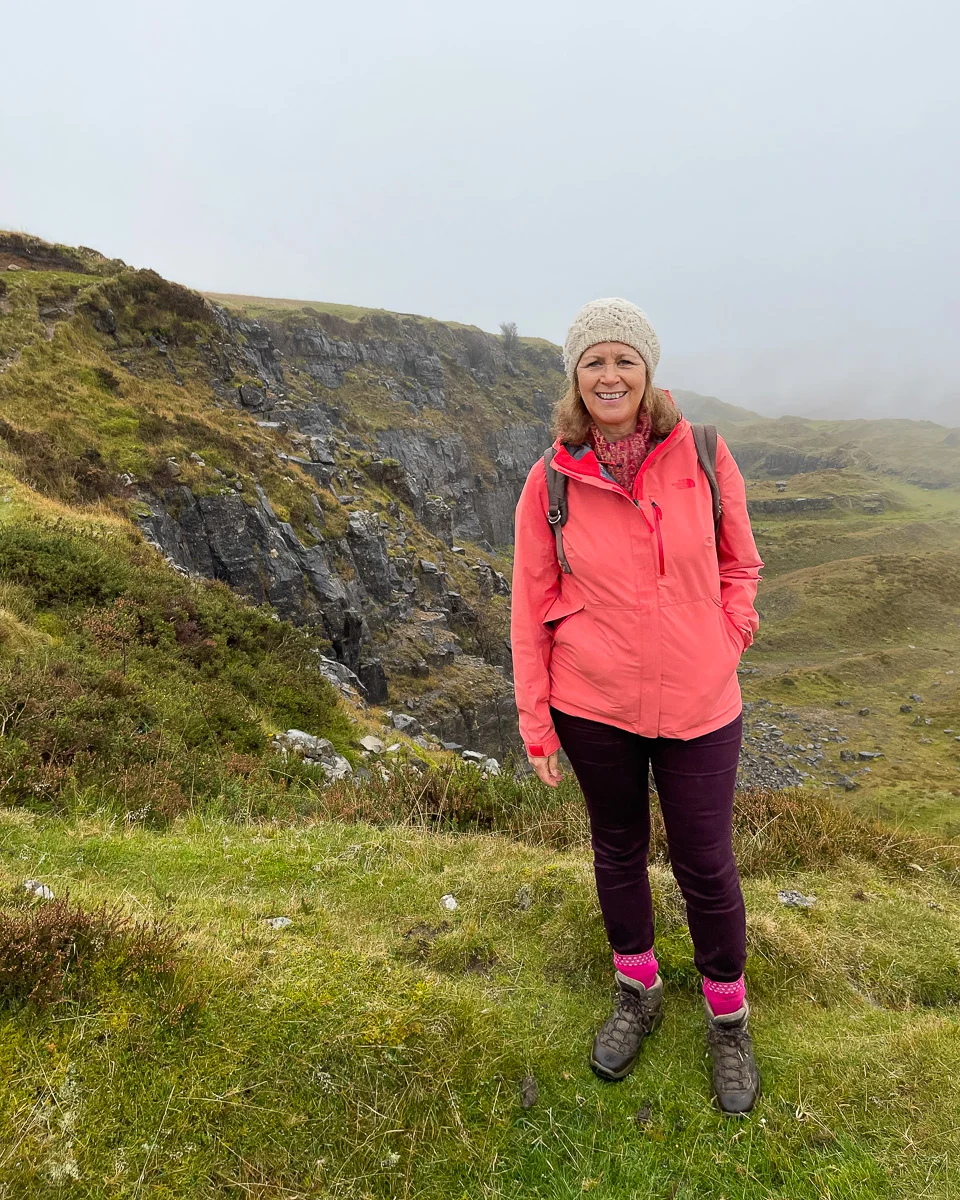
Read my guide to walking the Monmouthshire and Brecon Canal near Newport, Wales
Where to eat in Trefil
If you make the same walk as we did above Trefil, it’s worth stopping at the Top House Pub which is a friendly community pub serving drinks and home cooked food.
It was a favourite drinking spot of Nye Bevan who was born in the area and loved to walk locally on the moors. The pub is located high up in the village of Trefil and makes a good place to end your walk to the Chartists Cave.
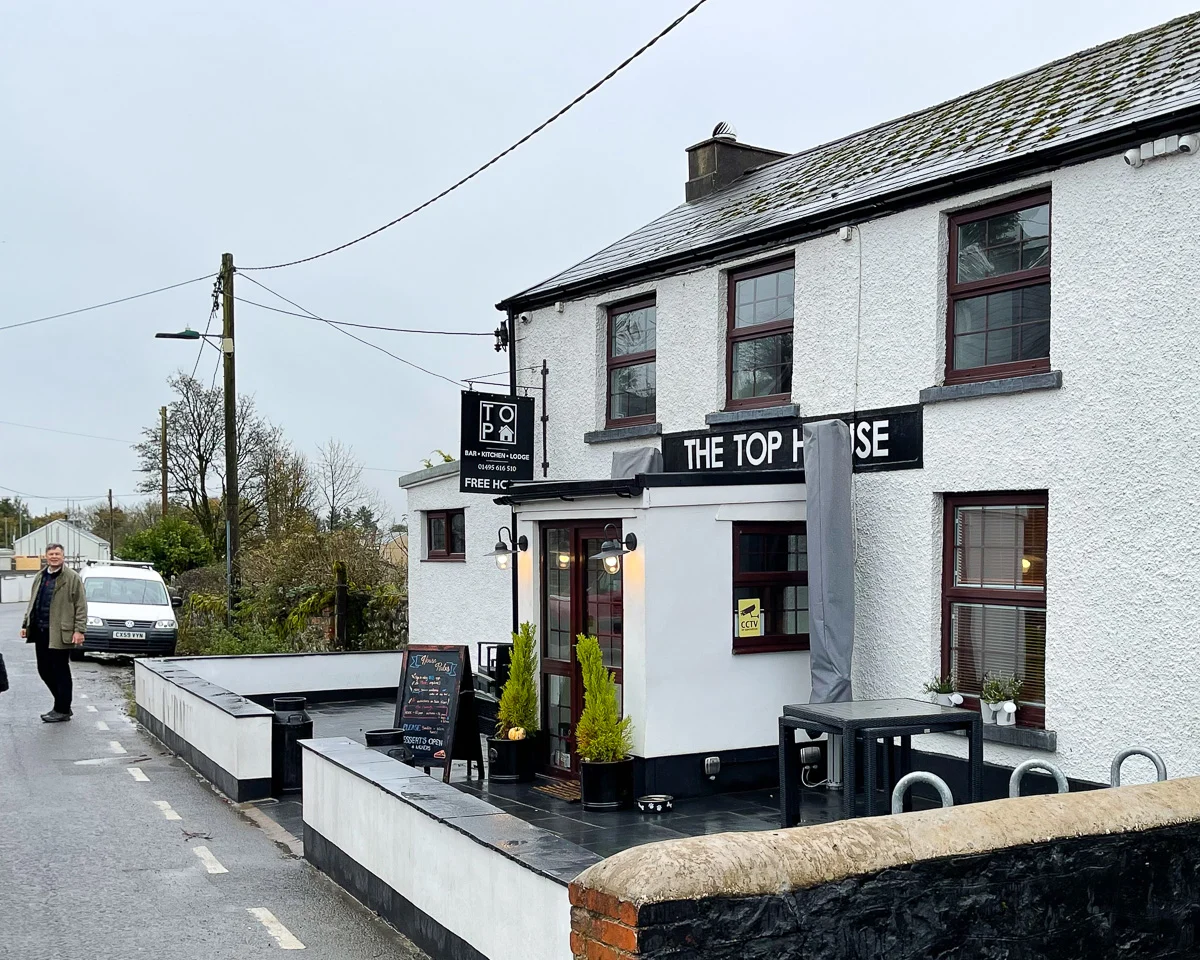
Visit Guardian of the Valleys, Six Bells
Not far from Tredegar, we just squeezed in a visit at the end of the day to Guardian, a stunning sculpture by Sebastien Boyesen that was commissioned in 2020 to mark the 50th anniversary of the Six Bells mining disaster.
Set on the site of the former colliery, the names of 45 miners who died in the 1960 disaster are cut into the metal panels around the plinth of the statue. At a distance the sculpture is framed by a natural pool and has an almost ghostly quality. Close up it becomes more substantial, the figure of a miner with hands outstretched to protect those who risk their lives underground.
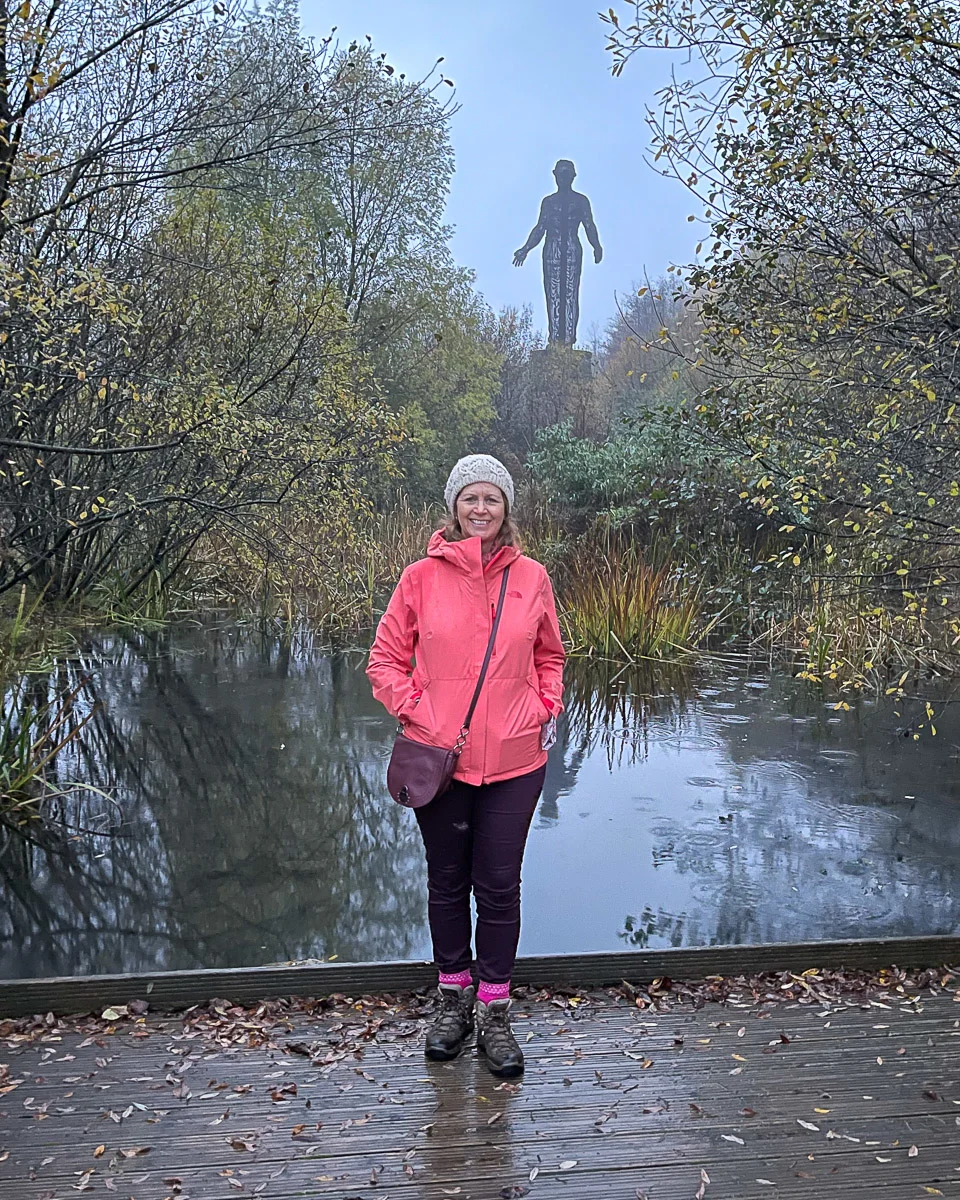
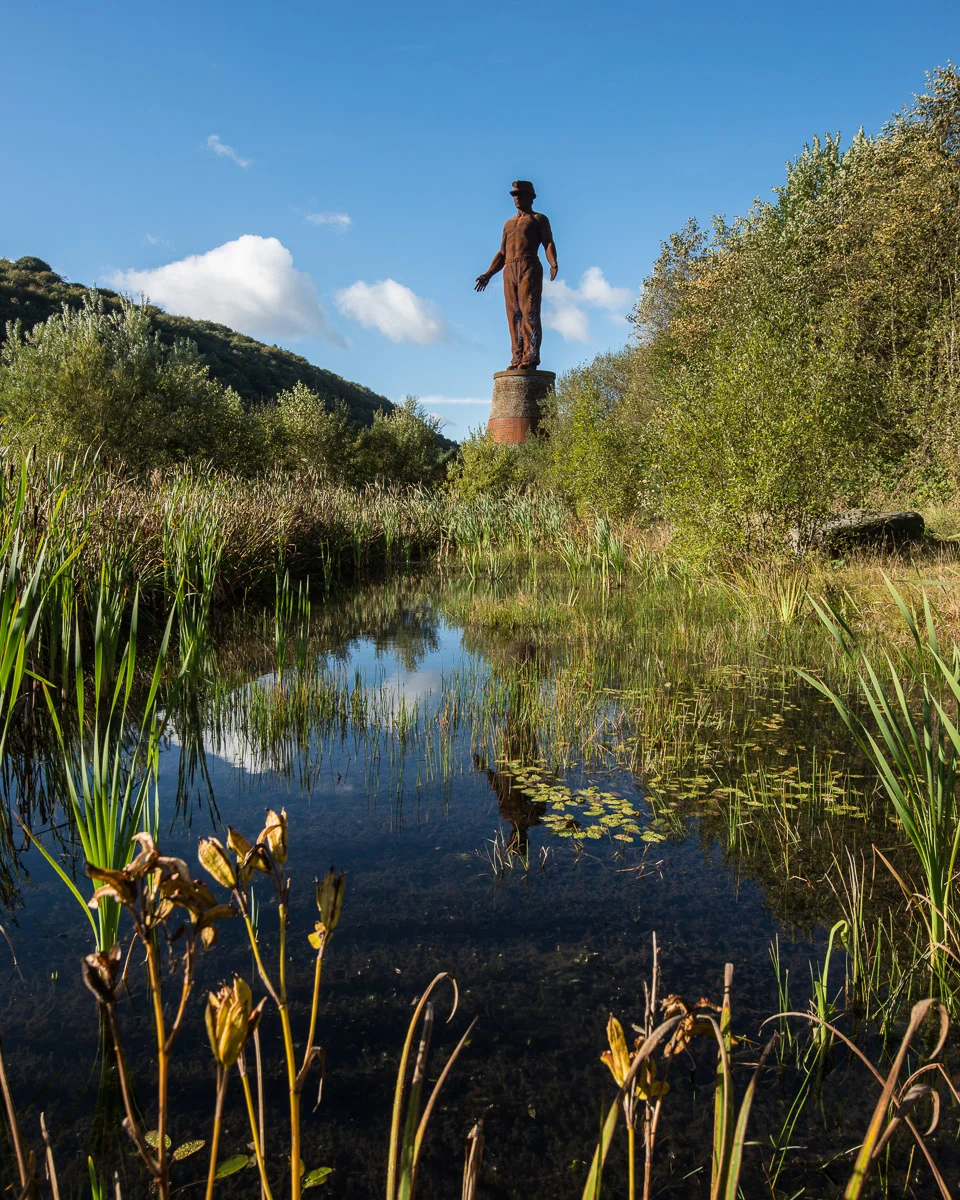
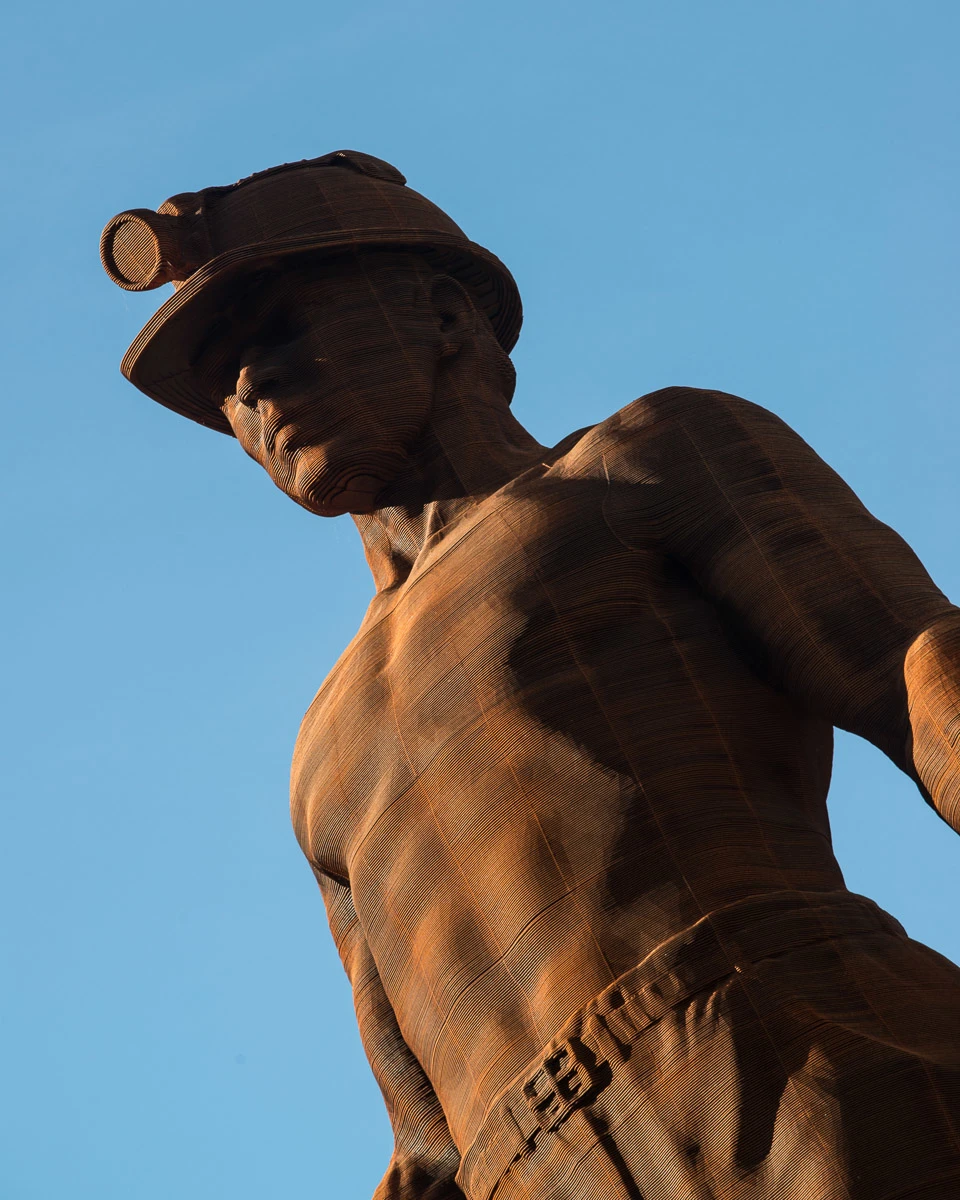
Where to stay while visiting Tredegar
Tredegar Arms hotel and restaurant
We were touring around a few different places in South Wales, so we didn’t stay in Tredegar, but a good choice would be the Tredegar Arms hotel and restaurant, which went through a renovation in 2019. The building was once a coach house for the Tredegar Ironworks and has been a pub since the 1970s.
Located in the heart of Tredegar, the hotel offers 10 luxury en-suite bedrooms and suites, as well as serving excellent pub meals in their restaurant and bar. Check here for prices and availability of the Tredegar Arms Hotel.
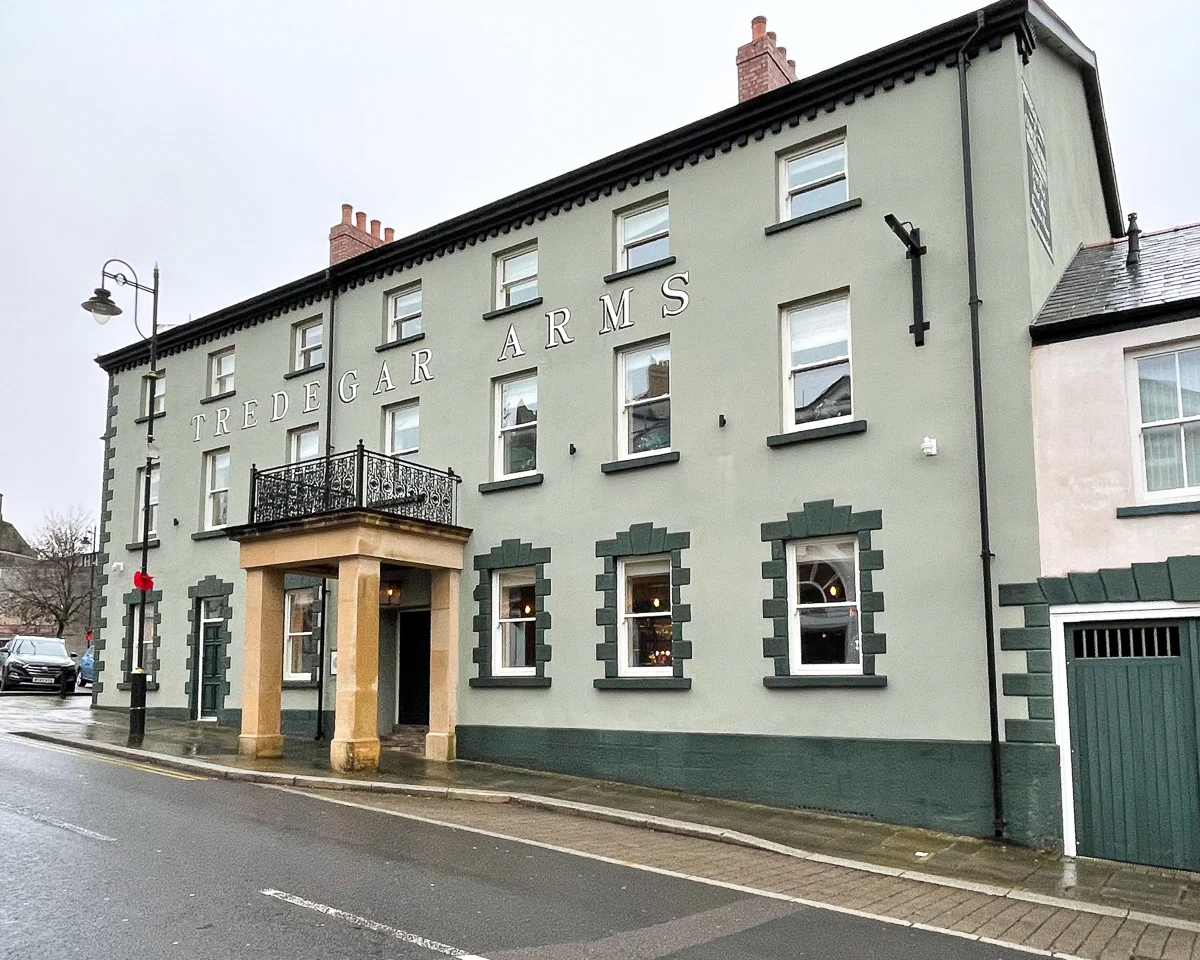

Need a guidebook for Wales? We recommend the Lonely Planet Wales Travel Guide
Plan your trip to Tredegar
You information on all the things to see in Tredegar and the surrounding area of Southern Wales, take a look at the Southern Wales and Visit Monmouthshire websites. On social media follow the @SouthernWales, @VisitMonmouthshire and @Dargandecymru (Welsh language) instagram feeds for more inspiration.
Cottages near Tredegar
While visiting Tredegar and touring around other parts of South Wales, we stayed at Roundhouse Farm near Nantyglo. It’s about 15 minutes drive from Tredegar and makes an excellent base if you want self catering accommodation that’s close to a range of attractions, such as the Blaenarvon World Heritage landscape, Welsh Valleys, Abergavenny and Brecon Beacons.
A quirk of the farm is that it includes one of the Round Towers, built by the local iron masters, Joseph and Crawshay Bailey who owned the local ironworks. They constructed this and another nearby round tower in 1816, as a place of refuge, when their workers rioted as a result of their wages being cut.
The towers were fitted out with cast iron from the foundry and the Grade II listed cottages where we stayed also had unusual cast iron roof supports.
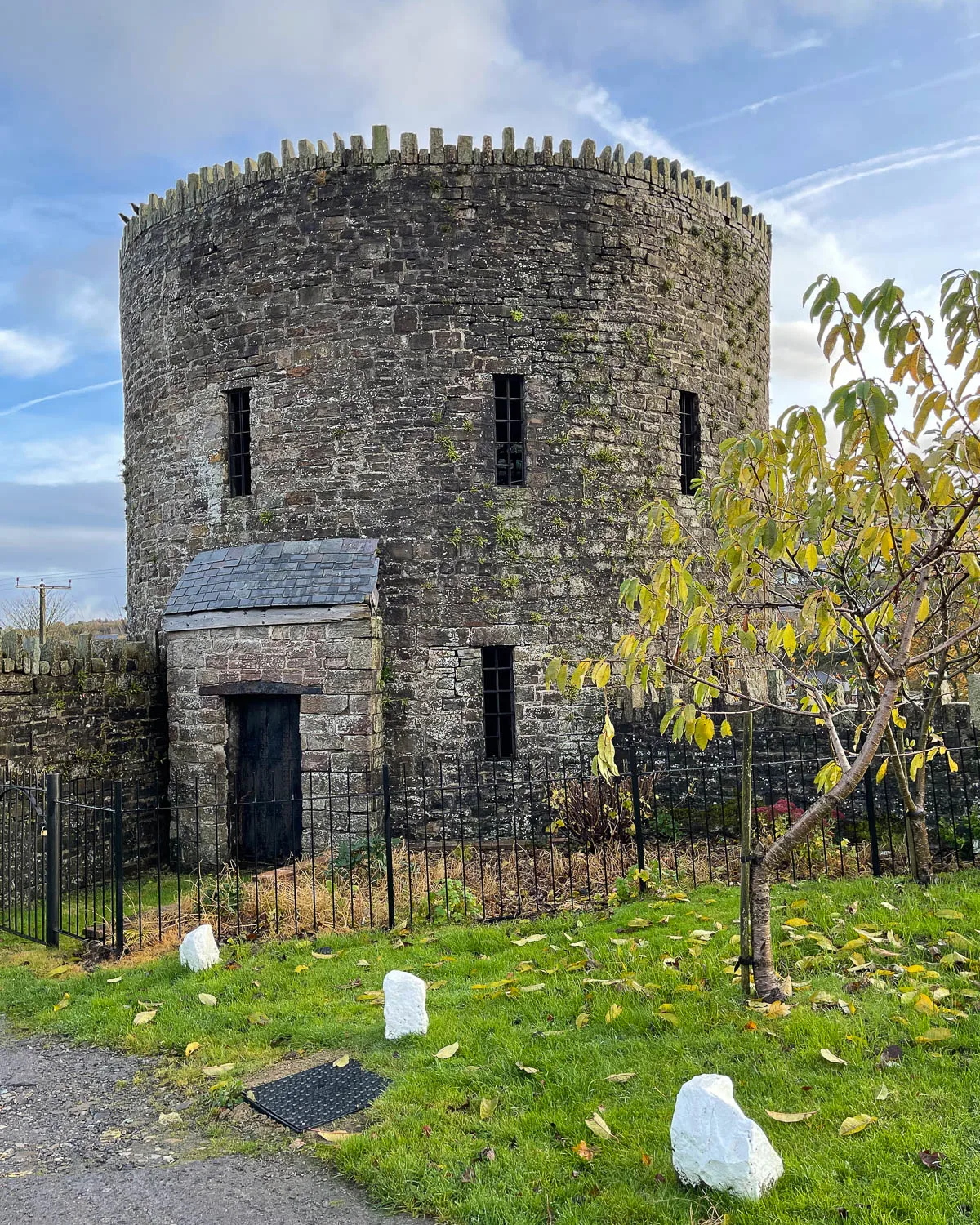
Round House Farm Cottages at Nantyglo
There are three cottages in a terrace at Round House Farm made from the original barn that forms one side of an enclosed farm yard. In the past working ponies from the mines and foundries would be kept securely in farmyards like this, since without them the works could not function.
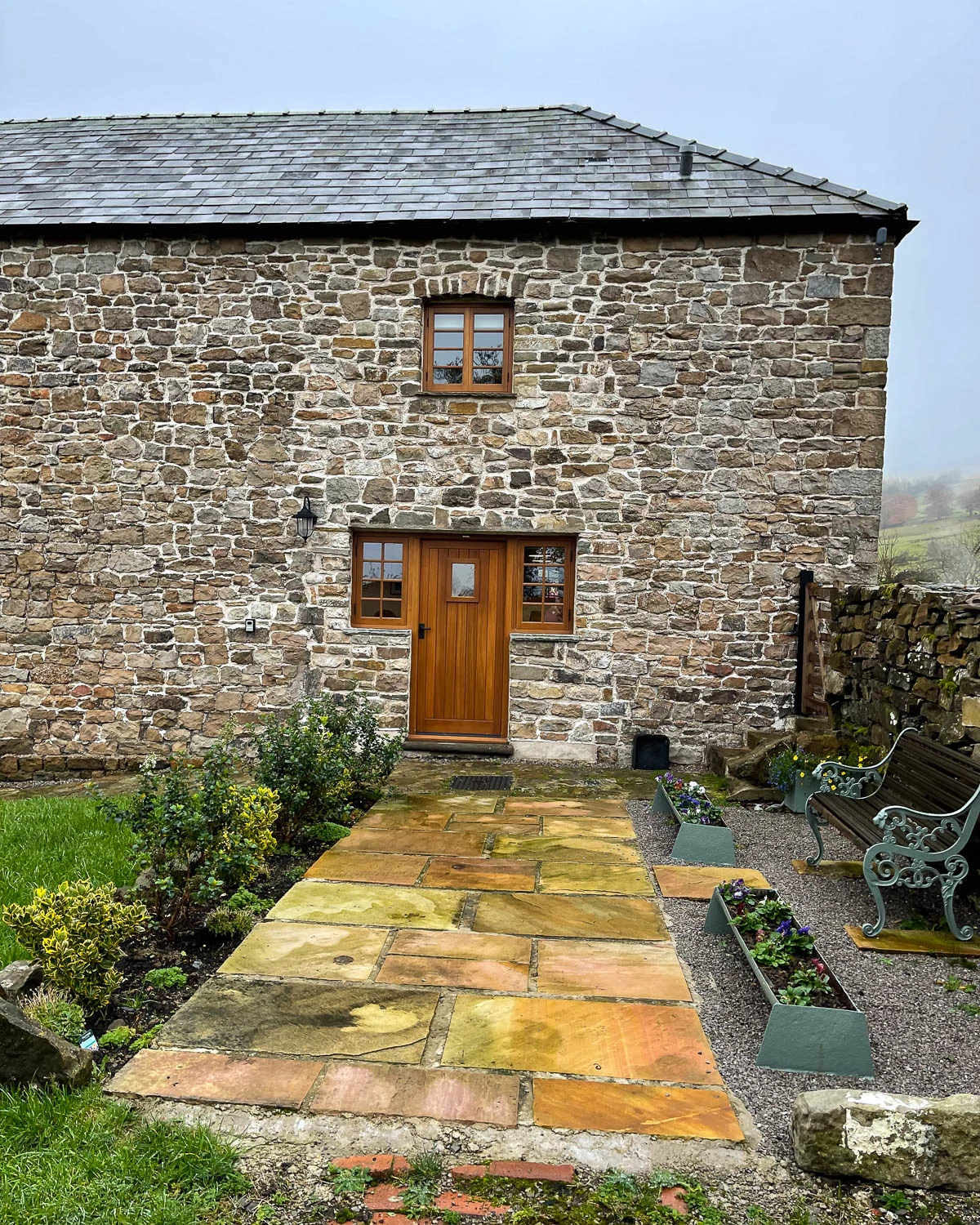
Ours was a two bedroom cottage, Henrietta, and it was a pleasure to stay in a Welsh cottage that was cosy and well equipped, but with fresh, contemporary furnishings.
The open plan ground floor with stone flags and areas of decorative exposed stone walls, included plenty of seating, a dining table and a kitchen area. Upstairs were a double and single bedroom that would be ideal for a family, styled with tasteful modern furniture and a large bathroom with shower.
We found it very relaxing to look out on the green fields from our bedroom to see the sheep and horses grazing nearby.
Book here for Roundhouse Farm Henrietta Cottage or their other cottages, Mary and William.
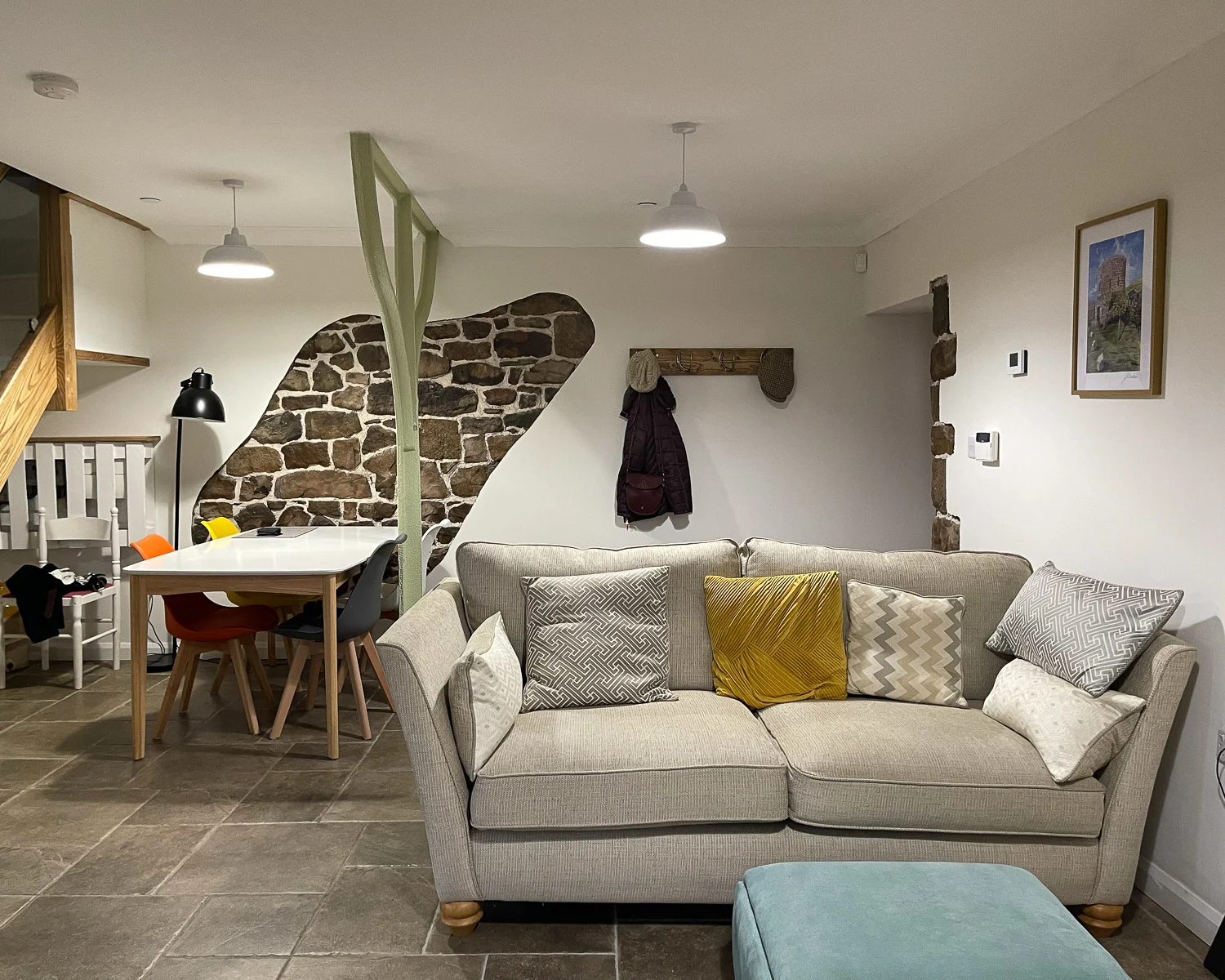
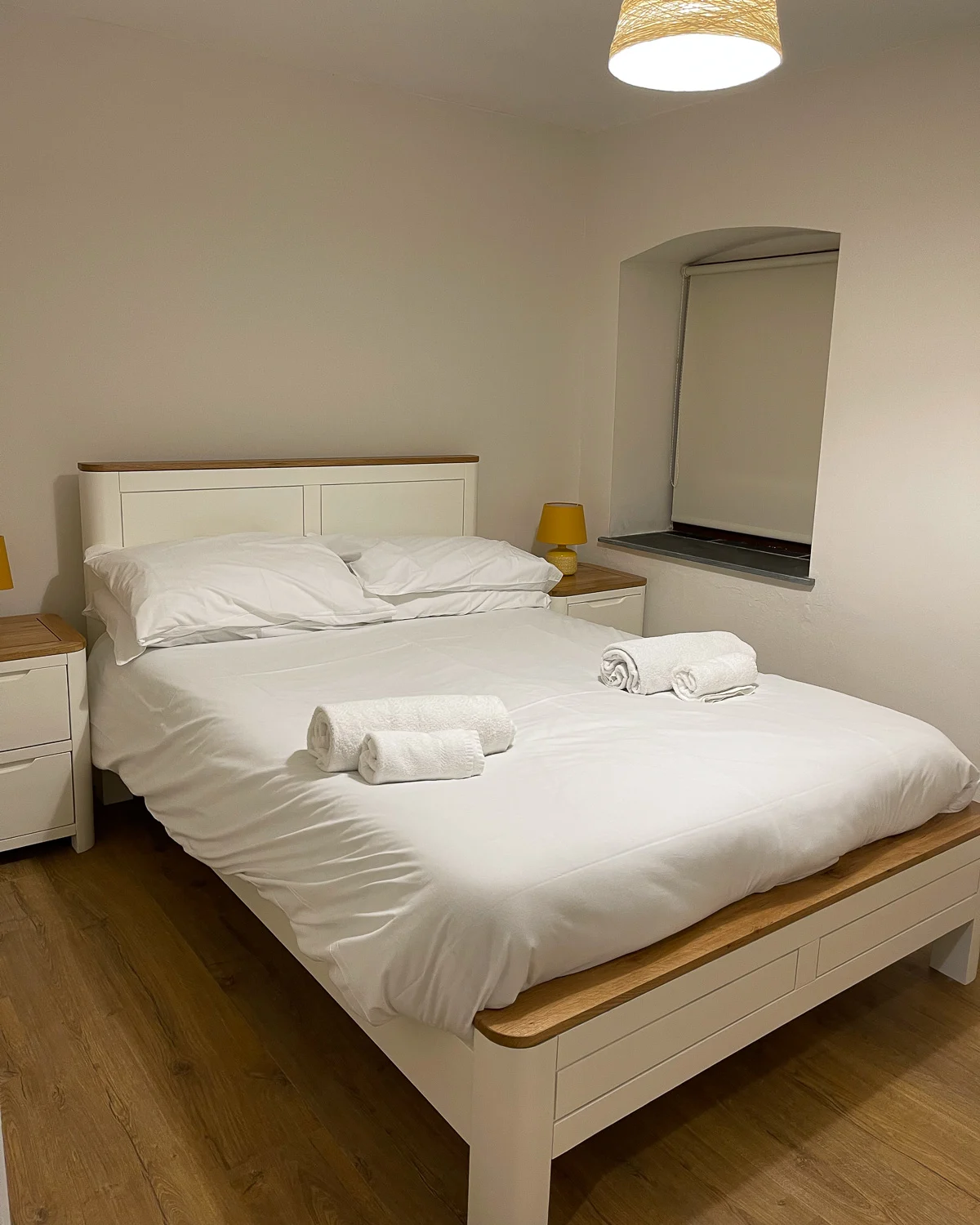
Read Next
To explore more about Wales read my article on the foodie town of Abergavenny – things to do, where to stay and eat
Pin it
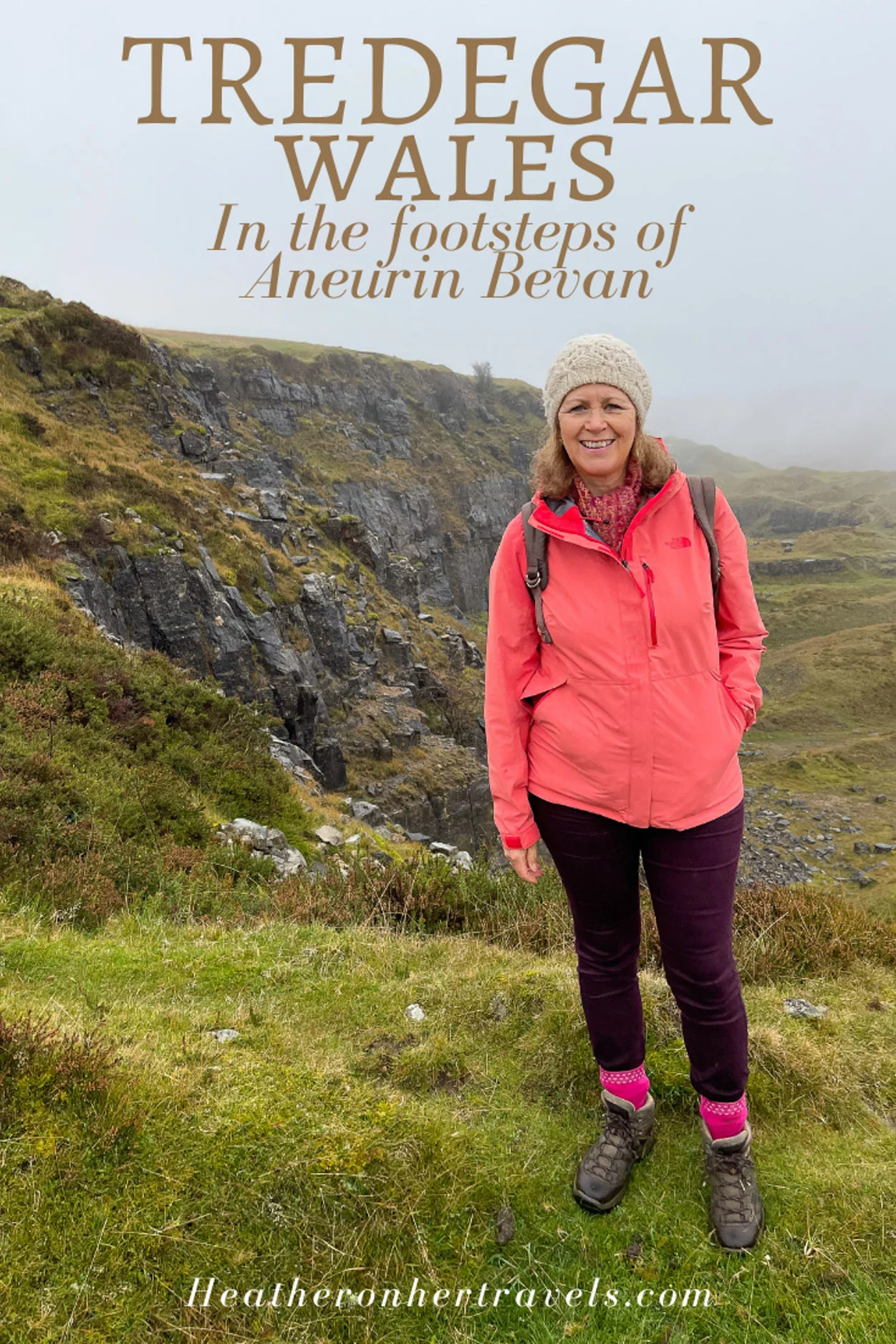
This article was sponsored* by Visit Monmouthshire and Southern Wales who provided some of the experiences and accommodation mentioned.
* More info on my policies page
This article is originally published at Heatheronhertravels.com

